AnyDATA DT2000DUAL CDMA Wireless Data Modem, EMIII-Dual User Manual EMIII Dual service manual
AnyDATA Corporation CDMA Wireless Data Modem, EMIII-Dual EMIII Dual service manual
AnyDATA >
Contents
- 1. Users Manual
- 2. Service Manual
Service Manual

Interface Description EMIII-DUAL Servce Manual Application
Information
EMIII-DUAL V1.0 AnyDATA.NET Proprietary – Use Subject to
Restrictions
CDMA Wireless Kit
EMIII-DUAL
AnyDATA.NET Inc.
Hanvit Bank B/D 6F
Byulyang-dong Kwachon
KOREA
Tel) 82-2-504-3360
Fax) 82-2-504-3362
SERVICE MANUAL

Interface Description EMIII-DUAL Servce Manual Application
Information
EMIII-DUAL V1.0 AnyDATA.NET Proprietary – Use Subject to
Restrictions
Introduction
The EMIII-DUAL is designed for the test and simulation of the CDMA wireless data communications. User
can connect the EMIII-DUAL to your PC or Notebook and easily test the wireless communications. User can
use this to develop your applications software even before user’s own hardware is ready. It also can be used
as a debugging during user’s hardware test.
Disclaimer and Limitation of Liability
AnyDATA.NET Inc. assumes no responsibility for any damage or loss resulting from the misuse of its products.
AnyDATA.NET Inc. assumes no responsibility for any loss or claims by third parties, which may arise through
the use of its products. AnyDATA.NET Inc. assumes no responsibility for any damage or loss caused by the
deletion or loss of data as a result of malfunctions or repairs.
The information disclosed herein is the exclusive property of AnyDATA.NET Inc. and no part of this publication
may be reproduced or transmitted in any form or by any means including electronic storage, reproduction,
adaptation , translation , execution or transmission without the prior written consent of AnyDATA.NET Inc.
The information contained in this document is subject to change without notice.
FCC RF Exposure Information
Warning! Read this information before using this device.
In August 1996 the Federal Communications Commission (FCC) of the United States with its
action in Report and Order FCC 96-326 adopted an updated safety standard for human
exposure to radio frequency electromagnetic energy emitted by FCC regulated transmitters.
Those guidelines are consistent with the safety standard previously set by both U.S. and
international standards bodies. The design of this device complies with the FCC guidelines and
these international standards.
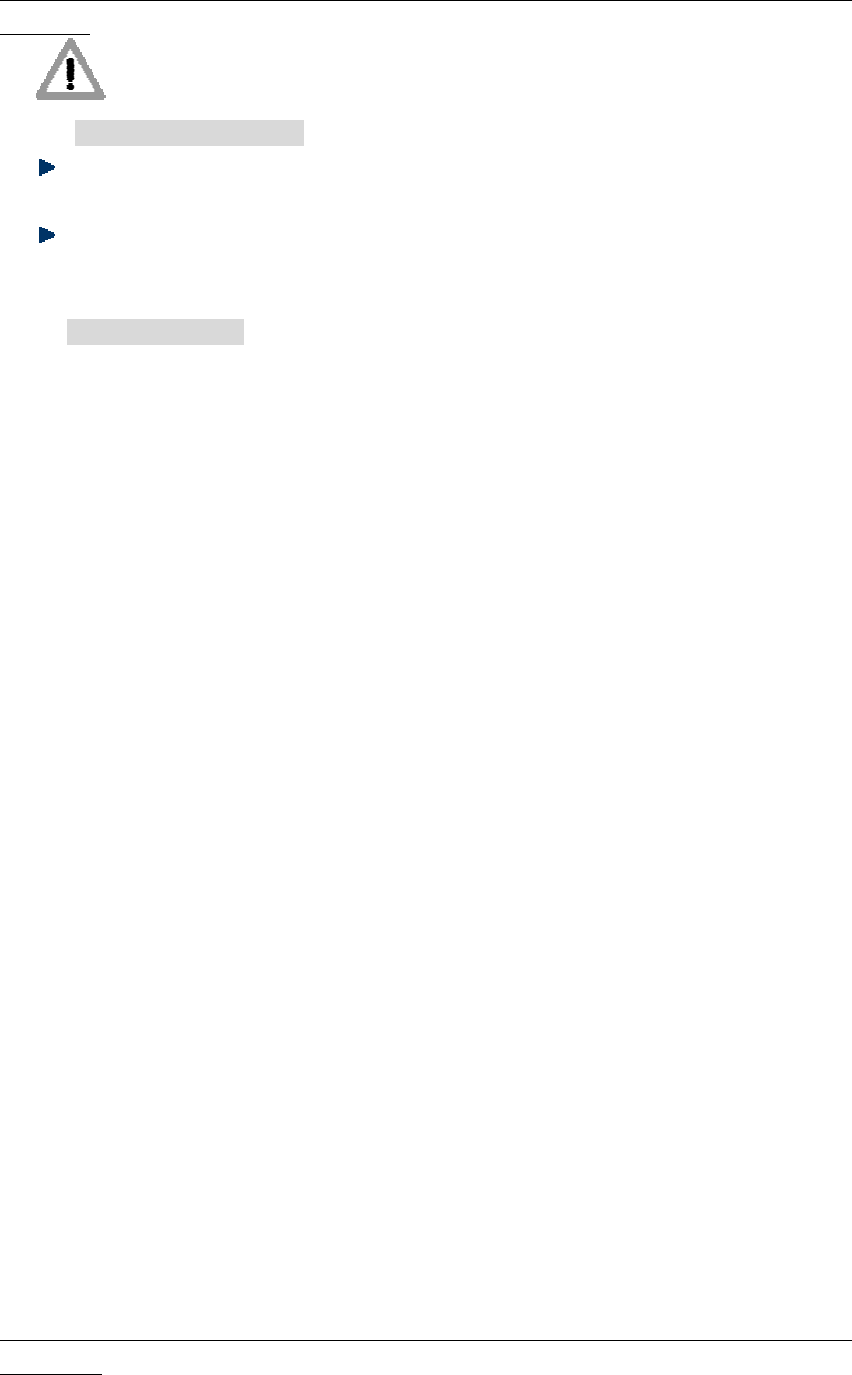
Interface Description EMIII-DUAL Servce Manual Application
Information
EMIII-DUAL V1.0 AnyDATA.NET Proprietary – Use Subject to
Restrictions
CAUTION
n Operating Requirements
The user can not make any changes or modifications not expressly approved by the party responsible for
compliance, otherwise it could void the user's authority to operate the equipment.
To satisfy FCC RF exposure compliance requirements for a mobile transmitting device, this device and
its antenna should generally maintain a separation distance of 20cm or more from a person’s body.
Special accessories
In order to ensure this device in compliance with FCC regulation, the special accessories are provided with this
device and must be used with the device only. The user is not allowed to use any other accessories than the
special accessories given with this device

Interface Description EMIII-DUAL Servce Manual Application
Information
EMIII-DUAL V1.0 AnyDATA.NET Proprietary – Use Subject to
Restrictions
Table of Contents
General Introduction
........................................................................................................................... 2
CHAPTER 1. System Introduction
1. System Introduction ................................................................................................ 3
2. Features and Advantages of CDMA Module ......................................................... 4
3. Structure and Functions of CDMA Module .......................................................... 7
4. Specification ........................................................................................................... 8
CHAPTER 2. NAM Input Method(Inputting of telephone numbers included)
1. NAM Programming Method and Telephone Number Input Method .......................11
CHAPTER 3. Circuit Description
1. Overview................................................................................................................ 14
2. RF Transmit/Receive Part ..................................................................................... 14
3. Digital/Voice Processing Part ...................................................................... …….. 17
4. Level Translator Part
………………………………………………………………….24
CHAPTER 4. FCC Notice
Appendix
......................................................................................................................... 22
1. Assembly and Disassembly Diagram
2. Block & Circuit Diagram
3. Part List
4. Component Layout

Interface Description EMIII-DUAL Servce Manual Application
Information
EMIII-DUAL V1.0 AnyDATA.NET Proprietary – Use Subject to
Restrictions
The EMIII-DUAL functions digital cellular module worked in CDMA (Code Division Multiple
Access) mode. CDMA type digital mode applies DSSS (Direct Sequence Spread Spectrum) mode ,
which is used in military.
This feature enables the phone to keep communication from being crossed and use one frequency
channel by multiple users in the same specific area, resulting that it increases the capacity 10 times
more compared with that in the analog mode currently used.
Soft/Softer Handoff, Hard Handoff, and Dynamic RF power Control technologies are combined into
this phone to reduce the call being interrupted in a middle of talking over phone.
CDMA digital cellular network consists of MSC (Mobile Switching Office), BSC (Base Station
Controller), BTS (Base station Transmission System), and MS (Mobile Station). Communication
between MS and BTS is designed to meet the specification of IS-95A (Common Air Interface). MS
meets the specifications of the below :
- IS-95A/B/C ( Common Air Interface ) : Protocol between MS and BTS
- IS-96A ( Vocoder ) : Voice signal coding
- IS-98 : Basic MS functions
- IS-126 : Voice loopback
- IS-99 : Short Message Service, Async Data Service, and G3 Fax Service
EMIII-DUAL is
digital mode is designed to be operated in full duplex.
General Introduction

EMIII-DUAL
1. System Introduction
1.1 CDMA Abstract
The cellular system has a channel hand-off function that is used for collecting the information on the locations and movements
of radio mobile telephones from the cell site by automatically controlling several cell site through the setup of data transmission
routes and thus, enabling one switching system to carry out the automatic remote adjustment. This is to maintain continuously
the call state through the automatic location confirmation and automatic radio channel conversion when the busy subscriber
moves from the service area of one cell site to that of another by using automatic location confirmation and automatic radio
channel conversion functions. The call state can be maintained continuously by the information exchange between switching
systems when the busy subscriber moves from one cellular system area to the other cellular system area.
In the cellular system, the cell site is a small-sized low output type and utilizes a frequency allocation system that considers
mutual interference, in an effort to enable the re-use of corresponding frequency from a cell site separated more than a certain
distance. The analog cellular systems are classified further into an AMPS system, E-AMPS System, NMT system, ETACS
system, and JTACS system depending on technologies used.
Unlike the time division multiple access (TDMA) or frequency division multiple access (FDMA) used in the band limited
environment, the Code Division Multiple Access(CDMA) system which is one of digital cellular systems is a multi-access
technology under the interference limited environment. It can process more number of subscribers compared to other systems
(TDMA system has the processing capacity three times greater than the existing FDMA system whereas CDMA system, about
12~15 times of that of the existing system).
CDMA system can be explained as follows: TDMA or SDMA can be used to enable each person to talk alternately or provide a
separate room for each person when two persons desire to talk with each other at the same time, whereas FDMA can be used to
enable one person to talk in soprano, whereas the other in bass (one of the two talkers can carry out synchronization for hearing
in case there is a bandpass filter function in the area of the hearer).
Another method available is to make two persons to sing in different languages at the same time, space, and frequency when
wishing to let the audience hear the singing without being confused. This is the characteristics of CDMA.
On the other hand, when employing the CDMA technology, each signal has a different pseudo-random binary sequence used to
spread the spectrum of carrier. A great number of CDMA signals share the same frequency spectrum. In the perspective of
frequency area or time area, several CDMA signals are overlapped. Among these types of signals, only desired signal energy is
selected and received through the use of pre-determined binary sequence; desired signals can be separated and then, received
with the correlator used for recovering the spectrum into its original state. At this time, the spectrums of other signals that have
different codes are not recovered into its original state and instead, processed as noise and appears as the self-interference of the
system.
CHAPTER 1. System Introduction

Interface Description EMIII-DUAL Servce Manual Application Information
EMIII-DUAL V1.0 AnyDATA.NET Proprietary – Use Subject to Restrictions
2. Features and Advantages of CDMA Module
2.1 Various Types of Diversities
In the CDMA broadband modulation(1.25MHz band), three types of diversities (time, frequency, and space) are used to reduce
serious fading problems generated from radio channels in order to obtain high-quality calls.
Time diversity can be obtained through the use of code interleaving and error correction code whereas frequency diversity can
be obtained by spreading signal energy to more wider frequency band. The fading related to normal frequency can affect the
normal 200~300kHz among signal bands and accordingly, serious affect can be avoided. Moreover, space diversity (also called
path diversity) can be realized with the following three types of methods.
First, it can be obtained by the duplication of cell site receive antenna. Second, it can be obtained through the use of multi-signal
processing device that receives a transmit signal having each different transmission delay time and then, combines them. Third,
it can be obtained through the multiple cell site connection (Soft Handoff) that connects the mobile station and more than two
cell sites at the same time.
2.2 Power Control
The CDMA system utilizes the forward (from a base station to mobile stations) and backward (from the mobile station to the
base station) power control in order to increase the call processing capacity and obtain high-quality calls. In case the originating
signals of mobile stations are received by the cell site in the minimum call quality level (signal to interference) through the use
of transmit power control on all the mobile stations, the system capacity can be maximized.
If the signal of mobile station is received too strong, the performance of that mobile station is improved. However, because of
this, the interference on other mobile stations using the same channel is increased and accordingly, the call quality of other
subscribers is reduced unless the maximum accommodation capacity is reduced.
In the CDMA system, forward power control, backward open loop power control, and closed loop power control methods are
used. The forward power control is carried out in the cell site to reduce the transmit power on mobile stations less affected by
the multi-path fading and shadow phenomenon and the interference of other cell sites when the mobile station is not engaged in
the call or is relatively nearer to the corresponding cell site. This is also used to provide additional power to mobile stations
having high call error rates, located in bad reception areas or far away from the cell site.
The backward open loop power control is carried out in a corresponding mobile station; the mobile station measures power
received from the cell site and then, reversely increases/decreases transmit power in order to compensate channel changes
caused by the forward link path loss and terrain characteristics in relation to the mobile station in the cell site. By doing so, all
the mobile office transmit signals in the cells are received by the cell site in the same strength.
Moreover, the backward closed loop power control used by the mobile station to control power with the commands issued out by
the cell site. The cell site receives the signal of each corresponding mobile station and compares this with the pre-set threshold
value and then, issues out power increase/decrease commands to the corresponding mobile station every 1.25 msec (800 times
per second).
By doing so, the gain tolerance and the different radio propagation loss on the forward/backward link are complemented.

Interface Description EMIII-DUAL Servce Manual Application Information
EMIII-DUAL V1.0 AnyDATA.NET Proprietary – Use Subject to Restrictions
2.3 Voice Encoder and Variable Data Speed
The bi-directional voice service having variable data speed provides voice communication which employs voice encoder
algorithm having power variable data rate between the mobile telephone cell site and mobile station. On the other hand, the
transmit voice encoder performs voice sampling and then, creates encoded voice packets to be sent out to the receive voice
encoder, whereas the receive voice encoder demodulates the received voice packets into voice samples.
One of the two voice encoders described in the above is selected for use depending on inputted automatic conditions and
message/data; both of them utilize four-stage frames of 9600, 4800, 2400, and 1200 bits per second. In addition, this type of
variable voice encoder utilizes adaptive threshold values when selecting required data rate. It is adjusted in accordance with the
size of background noise and the data rate is increased to high rate only when the voice of caller is inputted.
Therefore, background noise is suppressed and high-quality voice transmission is possible under the environment experiencing
serious noise. In addition, in case the caller does not talk, data transmission rate is reduced so that the transmission is carried out
in low energy. This will reduce the interference on other CDMA signals and as a result, improve system performance (capacity,
increased by about two times).
2.4 Protecting Call Confidentiality
CDMA signals have the function of effectively protecting call confidentiality by spreading and interleaving call information in
broad bandwidth. This makes the unauthorized use of crosstalk, search receiver, and radio very hard substantially. Also included
is the encryption function on various authentication and calls specified in IS-95 for the double protection of call confidentiality.
2.5 Soft Handoff
During the soft hand, the cell site already in the busy state and the cell site to be engaged in the call later participate in the call
conversion. The call conversion is carried out through the original call connection cell site, both cell sites, and then, new cell
site. This method can minimize call disconnection and prevent the user from detecting the hand-off.
2.6 Frequency Re-Use and Sector Segmentation
Unlike the existing analog cellular system, the CDMA system can reuse the same frequency at the adjacent cell and accordingly,
there is no need to prepare a separate frequency plan. Total interference generated on mobile station signals received from the
cell site is the sum of interference generated from other mobile stations in the same cell site and interference generated from the
mobile station of adjacent cell site. That is, each mobile station signal generates interference in relation to the signals of all the
other mobile signals.
Total interference from all the adjacent cell sites is the ratio of interference from all the cell sites versus total interference from
other mobile stations in the same cell site (about 65%). In the case of directional cell site, one cell normally uses a 120°sector
antenna in order to divide the sector into three. In this case, each antenna is used only for 1/3 of mobile stations in the cell site
and accordingly, interference is reduced by 1/3 on the average and the capacity that can be supported by the entire system is

Interface Description EMIII-DUAL Servce Manual Application Information
EMIII-DUAL V1.0 AnyDATA.NET Proprietary – Use Subject to Restrictions
increased by three times.
2.7 Soft Capacity
The subscriber capacity of CDMA system is flexible depending on the relation between the number of users and service classes.
For example, the system operator can increase the number of channels available for use during the busy hour despite the drop in
call quality. This type of function requires 40% of normal call channels in the standby mode during the handoff support, in an
effort to avoid call disconnection resulting from the lack of channels.
In addition, in the CDMA system, services and service charges are classified further into different classes so that more transmit
power can be allocated to high class service users for easier call set-up; they can also be given higher priority of using hand-off
function than the general users.

Interface Description EMIII-DUAL Servce Manual Application Information
EMIII-DUAL V1.0 AnyDATA.NET Proprietary – Use Subject to Restrictions
3. Structure and Functions of CDMA Module
The mobile station of CDMA system is made up of a radio frequency part and logic/control (digital) part. The mobile station is
fully compatible with the existing analog FM system. The mobile station antenna is connected with the transmitter/receiver via a
duplexer filter so that it can carry out the transmit/receive function at the same time.
The transmit frequency are the 25MHz band of 824~849MHz(CDMA)and 60MHz band of 1850~1910MHz(US_PCS) ,
whereas the receive frequency are the 25MHz band of 869~894MHz(CDMA) and 60MHz band of 1930~1990MHz(US_PCS).
The transmit/receive frequency are separated by 45MHz in CDMA, and by 80MHz in US_PCS. The RF signal from the antenna
is converted into intermediate frequency(IF) band by the frequency synthesizer and frequency down converter and then, passes
the bandpass SAW filter having the 1.25MHz band. IF output signals that have been filtered from spurious signal are converted
into digital signals via an analog-to-digital converters(ADC) and then, sent out respectively to 5 correlators in each CDMA
de-modulator. Of these, one is called a searcher whereas the remaining 4 are called data receiver(finger). Digitalized IF signals
include a great number of call signals that have been sent out by the adjacent cells. These signals are detected with pseudo-noise
sequence (PN Sequence). Signal to interference ratio (C/I) on signals that match the desired PN sequence are increased through
this type of correlation detection process. Then, other signals obtain processing gain by not increasing the ratio. The carrier
wave of pilot channel from the cell site most adjacently located is demodulated in order to obtain the sequence of encoded data
symbols. During the operation with one cell site, the searcher searches out multi-paths in accordance with terrain and building
reflections. On three data receivers, the most powerful four paths are allocated for the parallel tracing and receiving. Fading
resistance can be improved a great deal by obtaining the diversity combined output for de-modulation. Moreover, the searcher
can be used to determine the most powerful path from the cell sites even during the soft handoff during the two cell sites.
Moreover, four data receivers are allocated in order to carry out the de-modulation of these paths. Data output that has been
demodulated change the data string in the combined data row as in the case of original signals(deinterleaving), and then, are
de-modulated by the forward error correction decoder which uses the Viterbi algorithm.
On the other hand, mobile station user information sent out from the mobile station to the cell site pass through the digital voice
encoder via a mike. Then, they are encoded and forward errors are corrected through the use of convolution encoder. Then, the
order of code rows is changed in accordance with a certain regulation in order to remove any errors in the interleaver. Symbols
made through the above process are spread after being loaded onto PN carrier waves. At this time, PN sequence is selected by
each address designated in each call.
Signals that have been code spread as above are digital modulated (QPSK) and then, power controlled at the automatic gain
control amplifier (AGC Amp). Then, they are converted into RF band by the frequency synthesizer synchronizing these signals
to proper output frequencies.
Transmit signals obtained pass through the duplexer filter and then, are sent out to the cell site via the antenna.

Interface Description EMIII-DUAL Servce Manual Application Information
EMIII-DUAL V1.0 AnyDATA.NET Proprietary – Use Subject to Restrictions
4. Specification
4.1 General Specification
4.1.1 Transmit/Receive Frequency Interval : 45 MHz (CDMA), 80MHz(US_PCS)
4.1.2 Number of Channels (Channel Bandwidth)
CDMA : 20 CH (BW: 1.23MHz)
US_PCS : 42CH(BW:1.23MHz)
41.3 Operating Voltage : DC 6~12V
4.1.4 Operating Temperature : -30° ~ +60°
4.1.5 Frequency Stability :CDMA : ±300 Hz, US_PCS : ±150 Hz
4.1.6 Antenna : Whip Type, 50 Ω
4.1.7 Size and Weight
1) Size : 121mm x 57mm x 24mm (L x W x D) with case
2) Weight : 110g
4.1.8 Channel Spacing : CDMA : 1.25MHz, US_PCS: 1.25MHz
4.2 Receive Specification
4.2.1 Frequency Range
CDMA : 869.04 MHz ~ 893.97 MHz
US_PCS : 1931.25 MHz ~ 1988.75 MHz
4.2.2 Local Oscillating Frequency Range : 966.88MHz±12.5MHz(CDMA),
1749.62MHz ±30MHz(US_PCS)
4.2.3 Intermediate Frequency : 85.38MHz(CDMA), 210.38MHz(US_PCS)
4.2.4 Sensitivity : Less than -104dBm
4.2.5 Selectivity
CDMA : 3dB C/N Degration (With Fch±1.25 kHz : -30dBm)

Interface Description EMIII-DUAL Servce Manual Application Information
EMIII-DUAL V1.0 AnyDATA.NET Proprietary – Use Subject to Restrictions
4.2.6 Spurious Wave Suppression : Maximum of -80dBc
4.2.7 CDMA Input Signal Range
•
Dynamic area of more than -104~ -25 dBm : 80dB range.
4.3 Transmit Specification
4.3.1 Frequency Range
824.04 MHz ~ 848.97 MHz (CDMA)
1851.25MHz ~ 1908.75MHz (US_PCS)
4.3.2 Local Oscillating Frequency Range : 966.88 MHz±12.5 MHz(CDMA)
1749.62MHz±30MHz (US_PCS)
4.3.3 Intermediate Frequency : 130.38 MHz
4.3.4 Output Power: 0.32W(CDMA), 0.3W(US_PCS)
4.3.5 Interference Rejection
1) Single Tone : -30dBm at 900 kHz (CDMA), -30dBm at 1.25MHz
2) Two Tone : -43dBm at 900 kHz & 1700kHz(CDMA), -43dBm at 1.25MHz & 2.05MHz
4.3.6 CDMA TX Frequency Deviation : +300Hz or less(CDMA), +150Hz or less(US_PCS)
4.3.7 CDMA TX Conducted Spurious Emissions
•
900kHz : - 42 dBc/30kHz below(CDMA Only)
•
1.98MHz : - 54 dBc/30kHz below(CDMA, US_PCS)
4.3.8 CDMA Minimum TX Power Control : - 50dBm below
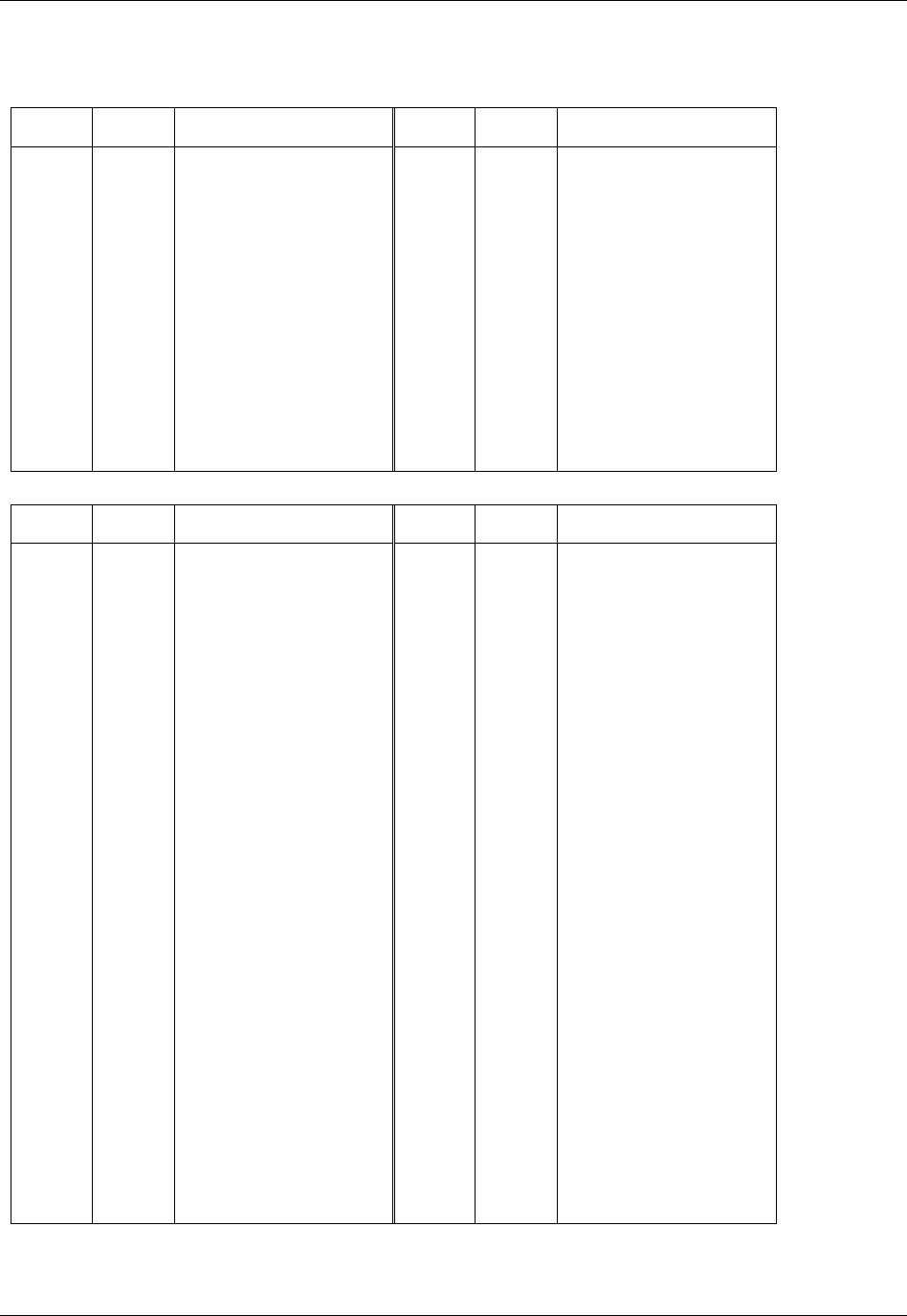
Interface Description EMIII-DUAL Servce Manual Application Information
EMIII-DUAL V1.0 AnyDATA.NET Proprietary – Use Subject to Restrictions
4.4 MS (Mobile Station) Transmitter Frequency
CDMA
FA NO.
CH.NO.
CENTER FREQUENCY
FA NO.
CH.NO.
CENTER FREQUENCY
1
2
3
4
5
6
7
8
9
10
1011
29
70
111
152
193
234
275
316
363
824.640 MHz
825.870 MHz
827.100 MHz
828.330 MHz
829.560 MHz
830.790 MHz
832.020 MHz
833.250 MHz
834.480 MHz
835.890 MHz
11
12
13
14
15
16
17
18
19
20
404
445
486
527
568
609
650
697
738
779
837.120 MHz
838.350 MHz
839.580 MHz
840.810 MHz
842.04 MHz
843.270 MHz
844.500 MHz
845.910 MHz
847.140 MHz
848.370 MHz
US_PCS
FA NO.
CH.NO.
CENTER FREQUENCY
FA NO.
CH.NO.
CENTER FREQUENCY
1
2
3
4
5
6
7
8
9
10
11
12
13
14
15
16
17
18
19
20
21
25
50
75
100
125
150
175
200
225
250
275
325
350
375
425
450
475
500
525
550
575
1851.25 MHz
1852.50MHz
1853.75 MHz
1855.00 MHz
1856.25 MHz
1857.50 MHz
1858.75 MHz
1860.00 MHz
1861.25 MHz
1862.50 MHz
1863.75 MHz
1866.25 MHz
1867.50 MHz
1868.75 MHz
1871.25 MHz
1872.50 MHz
1873.75 MHz
1875.00 MHz
1876.25 MHz
1877.50 MHz
1878.75 MHz
22
23
24
25
26
27
28
29
30
31
32
33
34
35
36
37
38
39
40
41
42
600
625
650
675
725
750
775
825
850
875
925
950
975
1000
1025
1050
1075
1100
1125
1150
1175
1880.00 MHz
1881.25 MHz
1882.50 MHz
1883.75 MHz
1886.25 MHz
1887.50 MHz
1888.75 MHz
1891.25 MHz
1892.50 MHz
1893.75 MHz
1896.25 MHz
1897.50 MHz
1898.75 MHz
1900.00 MHz
1901.25 MHz
1902.50 MHz
1903.75 MHz
1905.00 MHz
1906.25 MHz
1907.50 MHz
1908.75 MHz
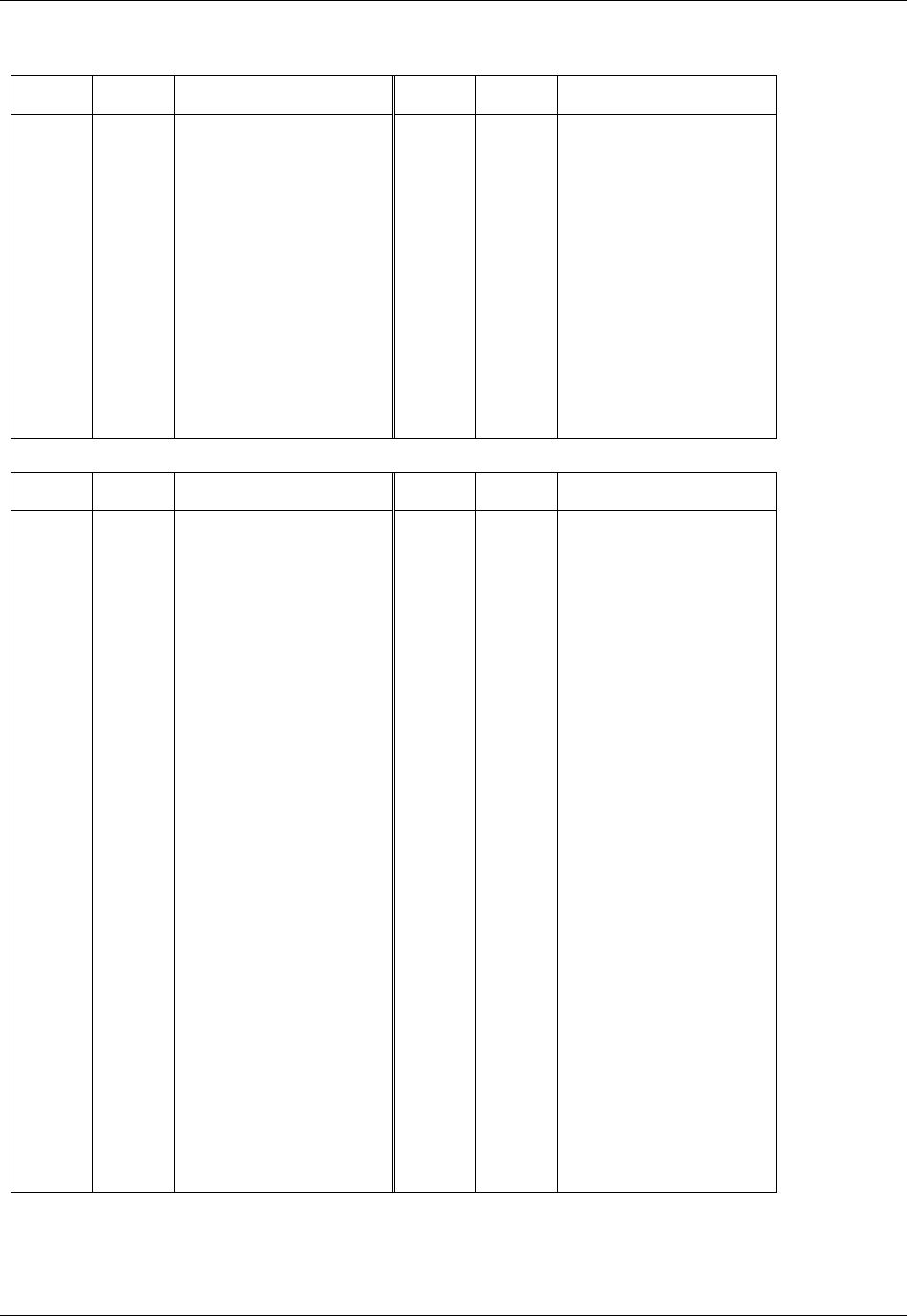
Interface Description EMIII-DUAL Servce Manual Application Information
EMIII-DUAL V1.0 AnyDATA.NET Proprietary – Use Subject to Restrictions
4.5 MS (Mobile Station) Receiver Frequency
CDMA
FA NO.
CH.NO.
CENTER FREQUENCY
FA NO.
CH.NO.
CENTER FREQUENCY
1
2
3
4
5
6
7
8
9
10
1011
29
70
111
152
193
234
275
316
363
869.640 MHz
870.870 MHz
872.100 MHz
873.330 MHz
874.560 MHz
875.790 MHz
877.020 MHz
878.250 MHz
879.480 MHz
880.890 MHz
11
12
13
14
15
16
17
18
19
20
404
445
486
527
568
609
650
697
738
779
882.120 MHz
883.350 MHz
884.580 MHz
885.810 MHz
887.04 MHz
888.270 MHz
889.500 MHz
890.910 MHz
892.140 MHz
893.370 MHz
US_PCS
FA NO.
CH.NO.
CENTER FREQUENCY
FA NO.
CH.NO.
CENTER FREQUENCY
1
2
3
4
5
6
7
8
9
10
11
12
13
14
15
16
17
18
19
20
21
25
50
75
100
125
150
175
200
225
250
275
325
350
375
425
450
475
500
525
550
575
1931.25 MHz
1932.50MHz
1933.75 MHz
1935.00 MHz
1936.25 MHz
1937.50 MHz
1938.75 MHz
1940.00 MHz
1941.25 MHz
1942.50 MHz
1943.75 MHz
1946.25 MHz
1947.50 MHz
1948.75 MHz
1951.25 MHz
1952.50 MHz
1953.75 MHz
1955.00 MHz
1956.25 MHz
1957.50 MHz
1958.75 MHz
22
23
24
25
26
27
28
29
30
31
32
33
34
35
36
37
38
39
40
41
42
600
625
650
675
725
750
775
825
850
875
925
950
975
1000
1025
1050
1075
1100
1125
1150
1175
1960.00 MHz
1961.25 MHz
1962.50 MHz
1963.75 MHz
1966.25 MHz
1967.50 MHz
1968.75 MHz
1971.25 MHz
1972.50 MHz
1973.75 MHz
1976.25 MHz
1977.50 MHz
1978.75 MHz
1980.00 MHz
1981.25 MHz
1982.50 MHz
1983.75 MHz
1985.00 MHz
1986.25 MHz
1987.50 MHz
1988.75 MHz
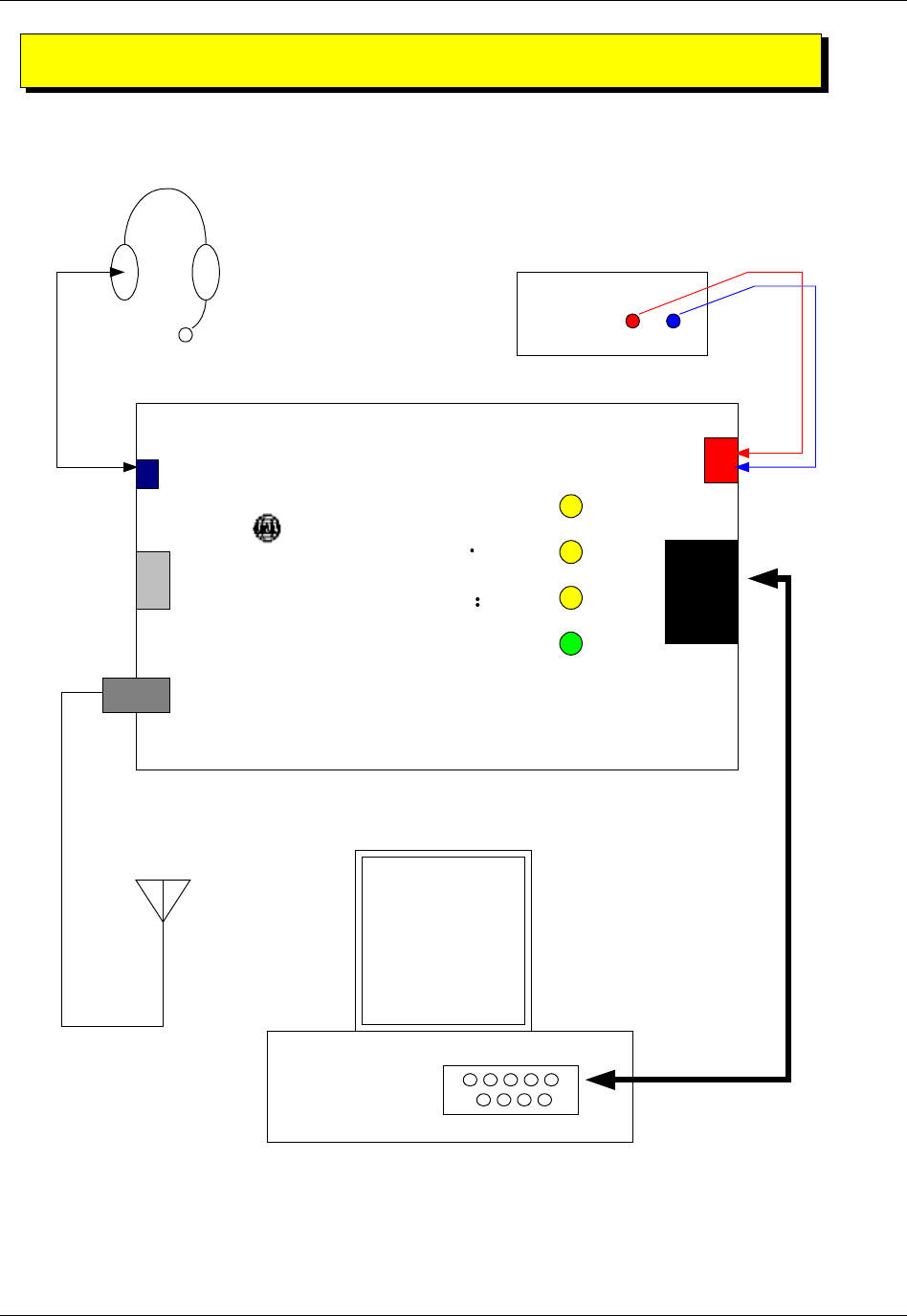
Interface Description EMIII-DUAL Servce Manual Application Information
EMIII-DUAL V1.0 AnyDATA.NET Proprietary – Use Subject to Restrictions
1.INSTALLATION METHOD
IDLEBUSYSMS PWR
i
PORT
AnyDATA
6~12V
Input UART1
EAR/MIC UART2 ANT
Connector
COM1
8 Pin to 9 Pin
Cable
Power
Supply
(6~12V)
+ -
HeadSet
ANT
1) Supply the voltage of 6~14V to 2pin Connector of the EMIII-DUAL.
2) Connect the UART1 to PC COM1 port with the RS-232C cable.
3) Install the operating program.
CHAPTER 2. NAM Input Method
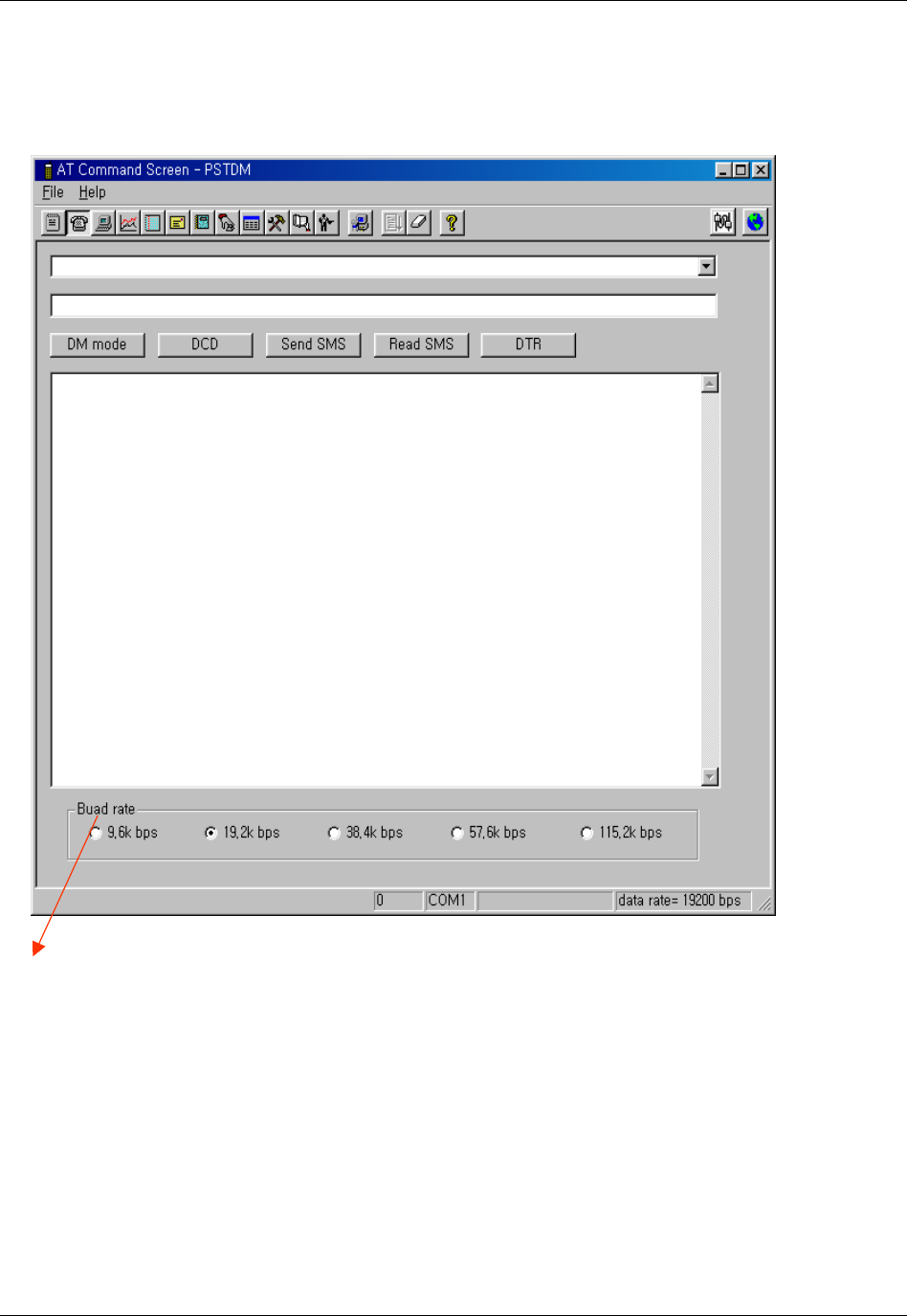
Interface Description EMIII-DUAL Servce Manual Application Information
EMIII-DUAL V1.0 AnyDATA.NET Proprietary – Use Subject to Restrictions
2. OPERATION METHOD
2) Set Buad rate to the modem’s.
3) Click [DM mode]
1) Run PSTDM program at Windows95 or Windows98
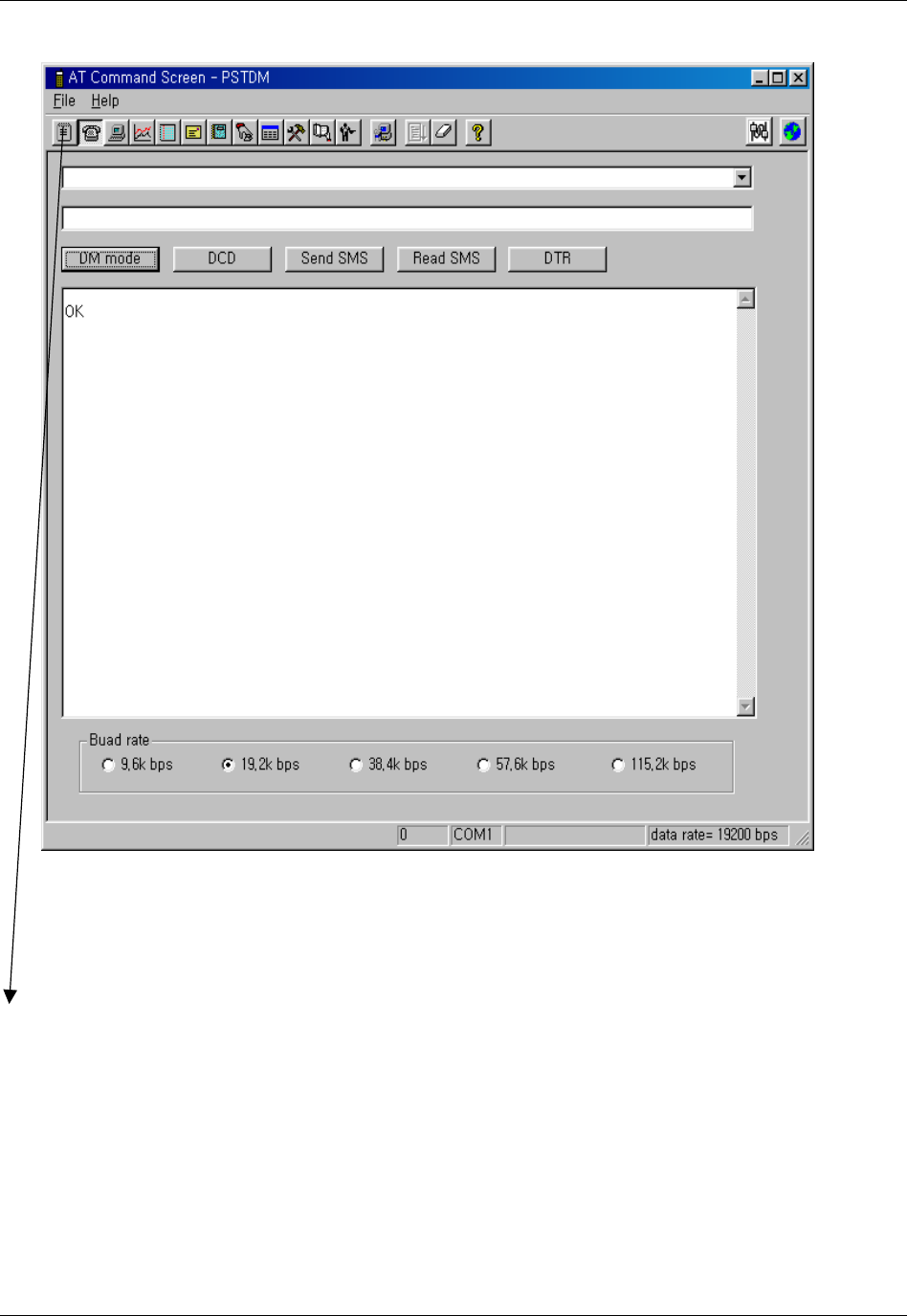
Interface Description EMIII-DUAL Servce Manual Application Information
EMIII-DUAL V1.0 AnyDATA.NET Proprietary – Use Subject to Restrictions
4) If OK
is displayed in the message box, modem is now ready for
communication with PC.
5
)
C
lick
MENU BAR
icon.
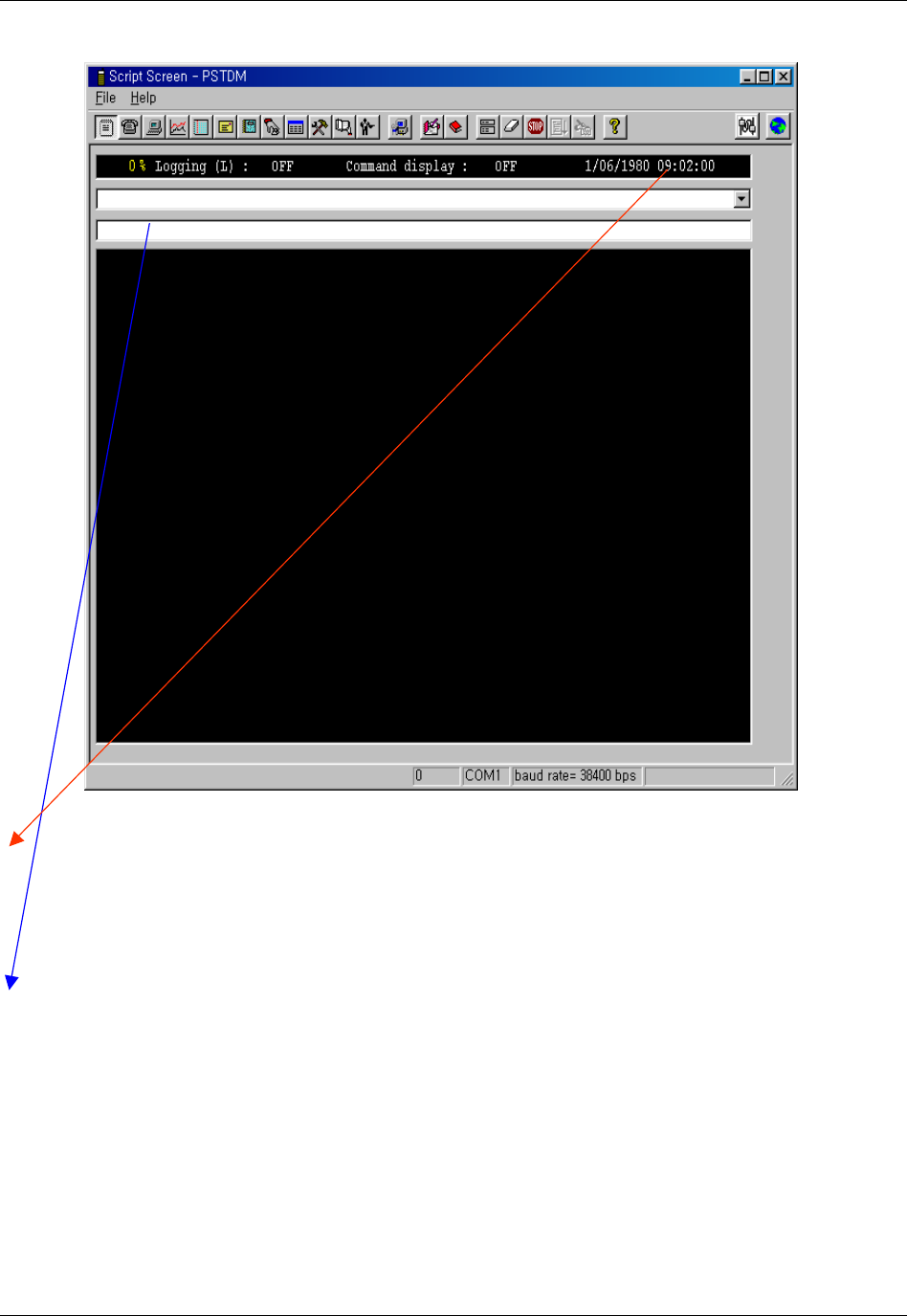
Interface Description EMIII-DUAL Servce Manual Application Information
EMIII-DUAL V1.0 AnyDATA.NET Proprietary – Use Subject to Restrictions
6) As shown in the picture above, service file input plane will be displayed
(See if clock is running. If it isn’t, communication with PC is not activated.
Repeat step 1 through 5, or reset the power of modem and repeat step 1 through 5)
7) Type NAM Programming script like the example shown below,
<NAM Programming script example>
Mode offline-d [ENTER]
nv_write name_nam {0," AnyDATA telecom "} [ENTER]
nv_write name_nam {1," AnyDATA telecom "} [ENTER]
Mode reset [ENTER]
SCRIPTINPUT WINDOW

Interface Description EMIII-DUAL Servce Manual Application Information
EMIII-DUAL V1.0 AnyDATA.NET Proprietary – Use Subject to Restrictions
1. Overview
IFR3000 receives modulated digital signals from the MSM of the digital circuit and then, changes them into analog
signals by the digital/analog converter (DAC, D/A Converter) in order to create baseband signals. Created
baseband signals are changed into IF signals by RFT3100 and then, fed into the Mixer after going through AGC.
IF signals that have been fed are mixed with the signals of VCO and changed into the RF signals and then, they are
amplified at the Power AMP. Finally, they are sent out to the cell site via the antenna after going through the
isolator and duplexer.
2. RF Transmit / Receive Part
2.1 CDMA Transmit End
8 bit I and Q transmit signals are inputted into 2 DACs (DIGITAL-TO-ANALOG CONVERTER) from the output
terminal TX_IQDATA0 ~ TX_IQDATA7 of MSM through the input terminals TXD0~TXD7 of BBA. Transmit
signal input speed is two times of TXCLK+, TXCLK- which are two transmit/receive reference frequency.
Among transmit signals being inputted, signals are inputted into I signal DAC when the transmit clock is in the rise
edge, whereas signals are inputted into Q Signal DAC during the drop edge. I and Q transmit signals are
compensated and outputted at MSM in order to compensate the 1/2 clock time difference generated between
reference clocks. In the signals coming out from the output terminal of DAC, there are spurious frequency
ingredients resulting from DAC output transition edge and parasite ingredients, transmit clock frequencies and
harmonics which are unwanted signals. Accordingly, spurious ingredients are removed by passing the signals
through LPF of passband 6.30KHz. Unlike the receive end, the transmit end LPF requires no OFFSET adjustment.
Analog baseband signals that have passed the CDMA LPF are mixed with I and Q signals of frequency 130.38
MHz (260.76 MHz created in the BBA internal VCO are divided by half into frequency 130.38MHz having the
phase difference of 90 degrees) in two mixers. The mixed signals are added again and converted into IF frequency
130.38 MHz ±630 KHz (CDMA Spread Power Density Modulated Signals) and then, outputted.
2.2. Tx IF/Baseband Processors, RFT3100 (U102)
The RFT3100 connects diretly with QUALCOMM’s MSM5100 utilizing an analog baseband
interface. The basebaand quadrature signals are upconverted to the Cellular or PCS frequency
bands and amplified to provide signal drive capability to the PA. The RFT3100 includes an IF
mixer for upconverting analog baseband to IF, a programmable PLL for generating Tx IF
frequency, single sideband upconversion from IF to RF, two cellular and two PCS driver
CHAPTER 3. Circuit Description

Interface Description EMIII-DUAL Servce Manual Application Information
EMIII-DUAL V1.0 AnyDATA.NET Proprietary – Use Subject to Restrictions
amplifiers, and Tx power control through an 85 dB VGA. As added benefit, the single sideband
upconversion eliminates the need for a bandpass filter normally required between the upconverter
and driver amplifier providing overall board area and cost savings. RFT3100 functionality is
specifically controlled from the MSM5100 via the three-line serial bus interface (SBI).
Designed to meet the requirements for global CDMA markets, the RFT3100 will operate over the
following Tx frequency ranges :
Cellular band 824MHz ~ 925MHz
PCS band 1750MHz ~1910MHz
2.3. Upconverter (U104)
Upconverters made up of a mixer part and Driver AMP part. The mixer part is used to receive
double-balanced OUT+ and OUT- of transmit AGC from baseband and mix the output of VCO (U171) with UHF
output signal, whereas the Amp part is used to buffer the output of this mixer. U105 has the operation range of
RF500MHz~1500MHz and has the conversion gain of 0 dB. In addition, the suppression of spurious signals which
are unwanted noise is about 30 dBc when being compared to RF output. The IF input signal range of the mixer is
DC~200MHz. The isolation on RF output terminal and LO signal input terminal at the IF input terminal is 30dB.
The range of LO signal that can be inputted is 300~1700MHz and power level is -6~0 dBm.
2.4. Transmit Bandpass Filter (FL101)
Transmit signals that have been converted from IF signals into RF signals after passing through the upconverter
U105 are inputted into the Power Amp U103 after passing once again through RF BPF F101in order to filter out
noise signals amplified during the amplification of RF signals after going through upconverter(U105). This is
carried out in order to create power level inputted to the Power AMP via RF BPF FL101 IL of two RF BPFs is
4dB as a maximum, whereas the ripple in the passing band is 2dB(maximum). The degree of the suppression of
transmit signals on receive band is at least 20dB or greater. The maximum power that can be inputted is about
25dBm.
2.5. Power Amplifier (U103)
The power amplifier U102 that can be used in the CDMA and FM mode has linear amplification capability,
whereas in the FM mode, it has a high efficiency. For higher efficiency, it is made up of one MMIC (Monolithic
Microwave Integrated Circuit) for which RF input terminal and internal interface circuit are integrated onto one IC

Interface Description EMIII-DUAL Servce Manual Application Information
EMIII-DUAL V1.0 AnyDATA.NET Proprietary – Use Subject to Restrictions
after going through the AlGaAs/GaAs HBT (heterojunction bipolar transistor) process. The module of power
amplifier is made up of an output end interface circuit including this MMIC. The maximum power that can be
inputted through the input terminal is +17dBm and conversion gain is about 28dB. RF transmit signals that have
been amplified through the power amplifier are sent to the duplexer and then, sent out to the cell site through the
antenna in order to prevent any damages on circuits, that may be generated by output signals reflected from the
duplexer and re-inputted to the power amplifier output end.
2.6. Description of Frequency Synthesizer Circuit
2.6.1 Voltage Control Temperature Compensation Crystal Oscillator(TCX201, VCTCXO)
The temperature range that can be compensated by TCX201 which is the reference frequency generator of mobile
terminal is -30 ~ +80 degrees. TCX201 receives frequency tuning signals called TRK_LO_ADJ from MSM as
0.5V~2.5V DC via R and C filters in order to generate the reference frequency of 19.68MHz and input it into the
frequency synthesizer of UHF band. Frequency stability depending on temperature is ± 2.0 ppm.
2.6.2 UHF Band Frequency Synthesizer (U202)
Reference frequency that can be inputted to U202 is 3MHz~40MHz. It is the dual mode
frequency synthesizer (PLL) that can synthesize the frequencies of UHF band 50MHz~1200MHz and IF band
20MHz~300MHz. U202 that receives the reference frequency of 19.68MHz from U174 creates 30kHz comparison frequency
with the use of internal program and then, changes the frequency of 900MHz band inputted from X200 which is the voltage
adjustment crystal oscillator into the comparison frequency of 30kHz at the prescaler in U202. Then, two signal differences are
calculated from the internal phase comparator. The calculated difference is inputted to DC for adjusting the frequency of U202
through U202 No.2 PIN and external loop filter in order to generate UHF signals. In addition, outputs of other PIN17 are
inputted into BBA after going through the VRACTOR diode and tank circuit so that the outputs of BBA internal receive end
VCO are adjusted to 170.76MHz.
2.6.3 Voltage Control Crystal Oscillator (U204)
U171 that generates the LO frequency (900MHz) of mobile terminal receives the output voltage of PLL U202 and
then, generates the frequency of 954MHz at 0.7V and the frequency of 980MHz at 2.7V. The sensitivity on control
voltage is 23MHz/v and the output level is 1dBm(maximum). Since LO frequency signal is very important for the
sensitivity of mobile terminal, they must have good spurious characteristics. U174 is -70dBc(maximum).

Interface Description EMIII-DUAL Servce Manual Application Information
EMIII-DUAL V1.0 AnyDATA.NET Proprietary – Use Subject to Restrictions
3. Digital/Voice Processing Part
3.1 Overview
The digital/voice processing part processes the user's commands and processes all the digital and voice signal
processing in order to operate in the phone. The digital/voice processing part is made up of a receptacle part, voice
processing part, mobile station modem part, memory part, and power supply part.
3.2 Configuration
3.2.1 Voice Processing Part
The voice processing part is made up of an audio codec into digital voice signals and digital voice signals into
analog voice signals, amplifying part for amplifying the voice signals and sending them to the ear piece, amplifying
part that amplifies ringer signals coming out from MSM5100, and amplifying part that amplifies signals coming
out from MIC and transferring them to the audio processor.
3.2.2 MSM (Mobile Station Modem) Part
MSM 5100 is the core elements of CDMA terminal and carries out the functions of CPU, encoder, interleaver,
deinterleaver, Viterbi decoder, Mod/Demod, and vocoder.
3.2.3 Memory Part
The memory part is made up of a flash memory, SRAM for storing data, and EEPROM.
3.2.4 Power Supply Part
The power supply part is made up of circuits for generating various types of power, used for the digital/voice
processing part.
+4.0V from external DC (+6V) is fed into five regulators(U605,U603,U602,U604,U606).
The five regulators produces +3.0V for the IFR3000(U204) and for Tx Parts.
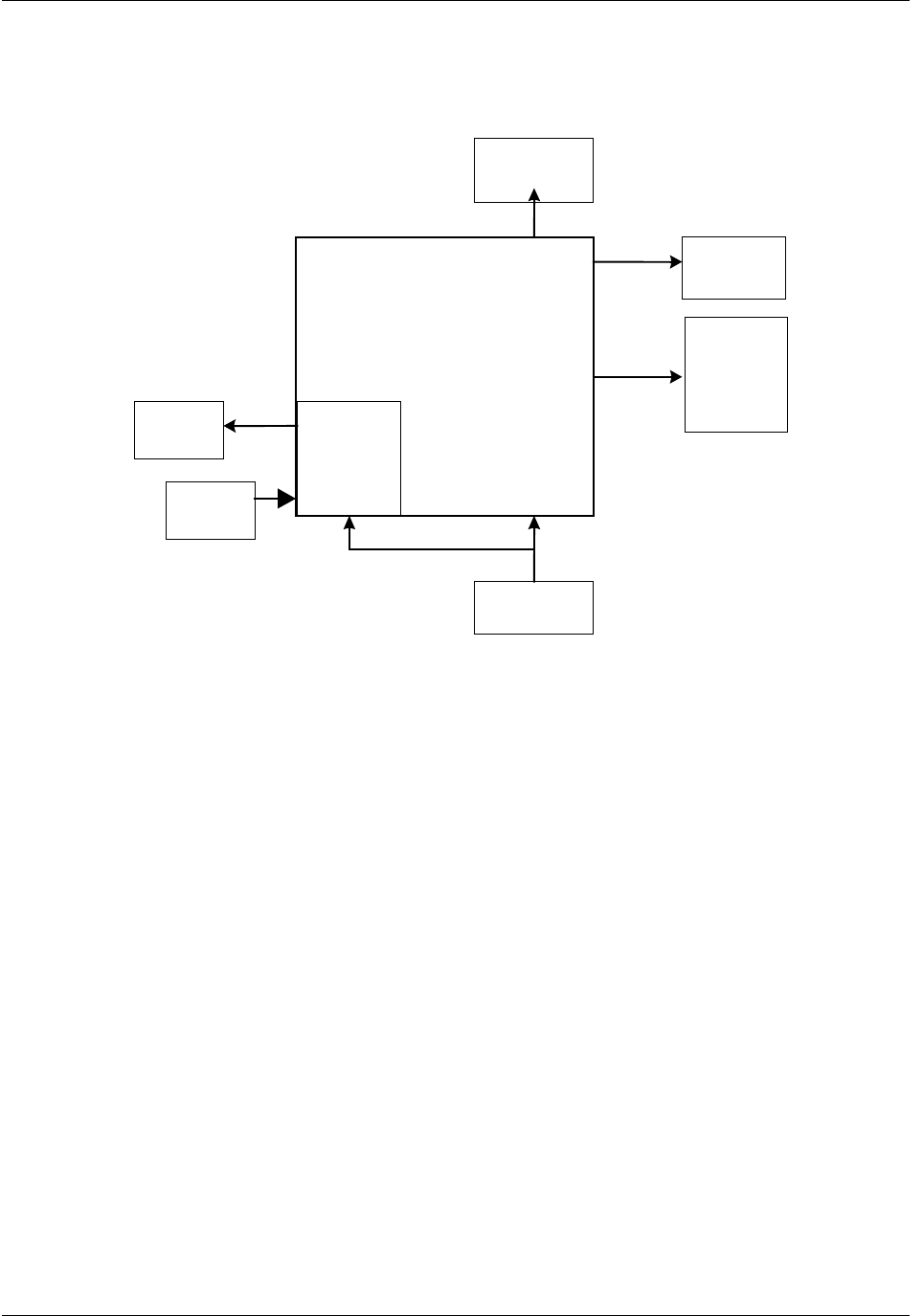
Interface Description EMIII-DUAL Servce Manual Application Information
EMIII-DUAL V1.0 AnyDATA.NET Proprietary – Use Subject to Restrictions
3.3 Circuit Description
Ringer
MCP
(16M+4M)
Receptacle
Power Supply
AUDIO
Processor
Earpiece
Mic
MSM5100
[Figure 3-1] Block Diagram of Digital/Voice Processing Part
3.3.1 MSM Part
MSM5100, which is U401, is the core element of CDMA system terminal that includes ARM7TDMI
microprocessor core. It is made up of a CPU, encoder, interleaver, deinterleaver, Viterbi decoder,
MOD/DEM, and vocoder. MSM5100, when operated in the CDMA mode, utilizes CHIPX8
(9.8304MHz) as the reference clock that is received from IFR3000, and uses TCXO (19.68MHz) that is
received from TCX201. CPU controls the terminal operation. Digital voice data that have been inputted
are voice-encoded and variable-rated. Then, they are convolutionally encoded so that error detection and
correction are possible. Coded symbols are interleaved in order to cope with multi-path fading. Each data
channel is scrambled by the long code PN sequence of the user in order to ensure the confidentiality of
calls.
Moreover, binary quadrature codes are used based on Walsh functions in order to discern each channel.
Data created thus are 4-phase modulated by one pair of Pilot PN code and they are used to create I and Q
data.
When received, I and Q data are demodulated into symbols by the demodulator and then, de-interleaved
in reverse to the case of transmission. Then, the errors of data received from Viterbi decoder are detected
and corrected. They are voice decoded at the vocoder in order to output digital voice data.

Interface Description EMIII-DUAL Servce Manual Application Information
EMIII-DUAL V1.0 AnyDATA.NET Proprietary – Use Subject to Restrictions
3.3.2 Memory Part
Memory part, MCP consists of 16M Flash memory and 4M static RAM.
In the MCP, there are programs used for terminal operation. The programs can be changed through down
loading after the assembling of terminals and data generated during the terminal operation are stored
temporarily and non-volatile data such as unique numbers (ESN) of terminals are stored.
3.3.3 Power Supply Part
When the input voltage (4.0V) in the DTSS-1900 is fed to the five regulators generated +3.0V and the
one regular generated +2.7V. The generated voltages are used for MSM5100, RFT3100, IFR3000 and
other LOGIC parts. PWR ASIC is operated by the control signal SLEEP/ from MSM5100 and
POWER_EN signal.
3.3.4 Logic Part
The Logic part consists of internal CPU of MSM, MCP. The MSM5100 receives TCXO (=19.68Mz)
from VC-TCXO and CHIPX8 clock signals from the IFR3000, and then controls the module during the
CDMA and the FM mode. The major components are as follows:
CPU : ARM7TDMI core
MEMORY : MCP (MB84VD21182A-85-PBS : U505)
CPU
ARM7TDMI CMOS type 16-bit microprocessor is used and CPU controls all the circuitry. For the
CPU clock, 32.768KHz is used.
MCP(16M +4M)
MCP is used to store the terminal’s program. Using the down-loading program, the program can be
changed even after the terminal is fully assembled.
SRAM is used to store the internal flag information, call processing data, and timer data.
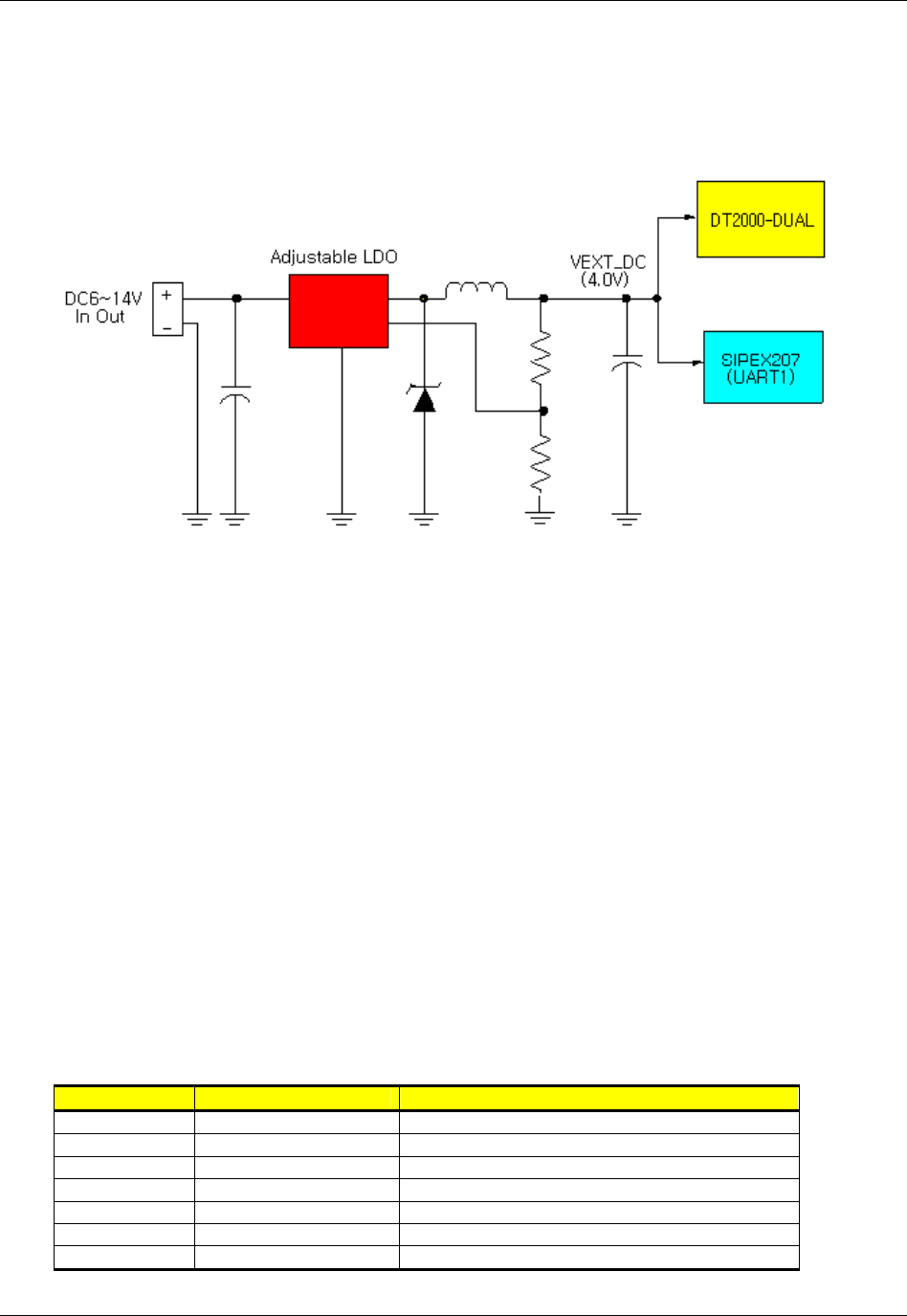
Interface Description EMIII-DUAL Servce Manual Application Information
EMIII-DUAL V1.0 AnyDATA.NET Proprietary – Use Subject to Restrictions
4. Level Translator Part
4.1 EMIII-DUAL supply power to Modem(4.0V).
[Fig 4-1] The Block Diagram of Source (in brief)
4.2 UART Interface
The Universal Asynchronous Receiver Transmitter (UART) communicates with serial data that
conforms the RS-232 Interface protocol. The modem provides 3.0V CMOS level outputs and 3.0V
CMOS switching input level. And all inputs have 5.0V tolerance but 3.0V or 3.3V CMOS logic
compatible signals are highly recommended.
All the control signals of the RS-232 signals are active low, but data signals of RXD, and TXD are
active high.
The UART has a 64byte transmit (TX) FIFO and a 64byte receive (RX) FIFO. The UART Features
hardware handshaking, programmable data sizes, programmable stop bits, and odd, even, no parity.
The UART operates at a 115.2kbps maximum bit rate.
4.2.1 UART Inter Pinouts
NAME DESCRIPTION CHARACTERISTIC
DP_DCD/ Data Carrier Detect Network connected from the modem
DP_RI/ Ring Indicator Output to host indicating coming call
DP_RTS/ Request to Send Ready for receive from host
DP_TXD Transmit Data Output data from the modem
DP_DTR/ Data Terminal Ready Host ready signal
DP_RXD Receive Data Input data to the modem
DP_CTS/ Clear to Send Modem output signal
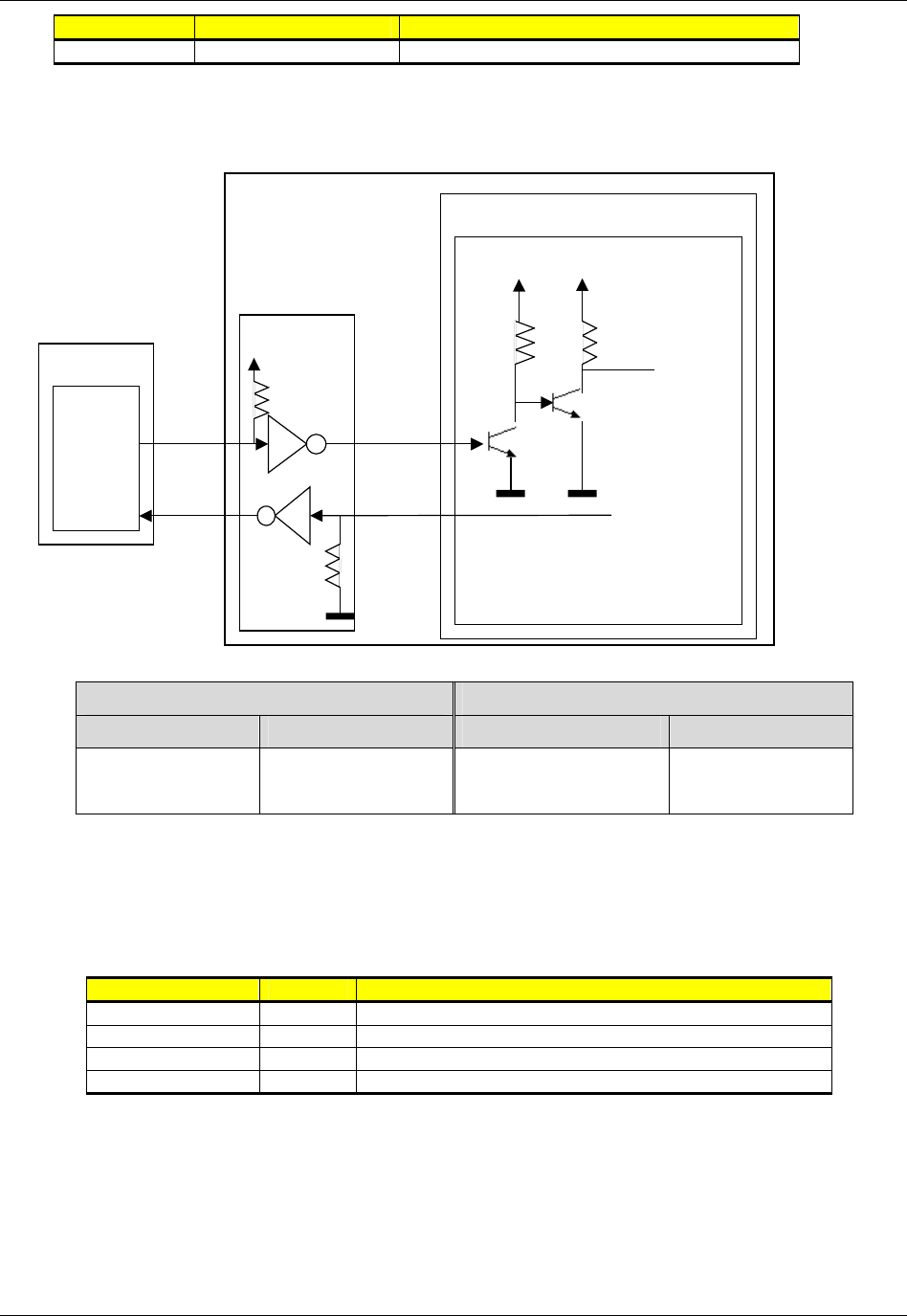
Interface Description EMIII-DUAL Servce Manual Application Information
EMIII-DUAL V1.0 AnyDATA.NET Proprietary – Use Subject to Restrictions
NAME DESCRIPTION CHARACTERISTIC
GND Signal Ground Signal ground
4.2.2 Signal level of RXD/TXD
PC
RS232
TX
RX
01 03
DT2000 -DUAL
Vout= 2.8V
+3V +3V
MSM_input
MSM_output
SIPEX207
+4V
V
EMIII-DUAL
02 04
RS232 PHONE
TX01 RX02 TX04 RX03
VMAX = 7.68V
VMIN = -7.68V
VMAX = 6.50V
VMIN = -6.64V
VMAX = 3.00V
VMIN = 0V
VMAX = 3.9V
VMIN = 0V
[Figure 4-2] Signal Level of RXD, TXD
4.3 The function of Real Audio Test( including Voice Test)
NAME TYPE DESCRIPSION
MIC+ I Microphone audio input
MIC- IS Ear/microphone set detect
EAR O Ear audio output
GND_A Audio ground

Interface Description EMIII-DUAL Servce Manual Application Information
EMIII-DUAL V1.0 AnyDATA.NET Proprietary – Use Subject to Restrictions
This equipment has been tested and found to comply with the limits for a Class B digital device, pursuant to part 15
of the FCC Rules. These limits are designed to provide reasonable protection against harmful interference in a
residential installation. This equipment generates, uses and can radiate radio frequency energy and, if not installed and
used in accordance with the instructions, may cause harmful interference to radio communications. However, there is
no guarantee that interference will not occur in a particular installation. If this equipment does cause harmful
interference to radio or television reception, which can be determined by turning the equipment off and on, the user is
encouraged to try to correct the interference by one or more of the following measures:
n Reorient or relocate the receiving antenna.
n Increase the separation between the equipment and receiver.
n Connect the equipment into an outlet on a circuit different from that to which the receiver is connected.
n Consult the dealer or an experienced radio/TV technician for help.
CHAPTER 4. FCC Notice

Interface Description EMIII-DUAL Servce Manual Application Information
EMIII-DUAL V1.0 AnyDATA.NET Proprietary – Use Subject to Restrictions
1. Assembly and Disassembly Diagram
2. Block & Circuit Diagram
3. Part List
4. Component Layout
APPENDIX
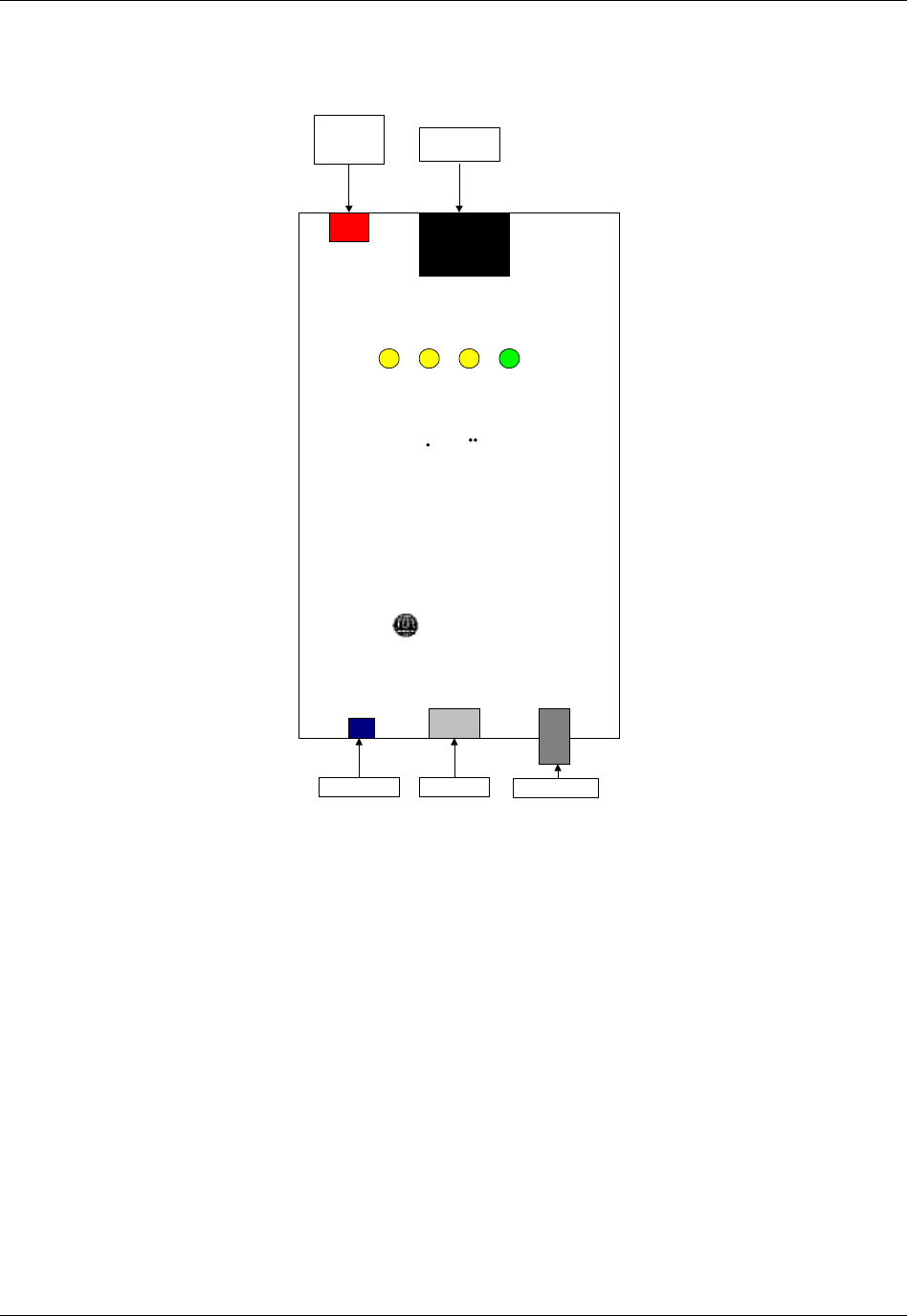
Interface Description EMIII-DUAL Servce Manual Application Information
EMIII-DUAL V1.0 AnyDATA.NET Proprietary – Use Subject to Restrictions
1. Assembly and Disassembly Diagram
DC6~12V
INPUT
RS232C
IDLEBUSYSMSPWR
EAR-MIC DEBUG CDMA ANT
iPORT
AnyDATA
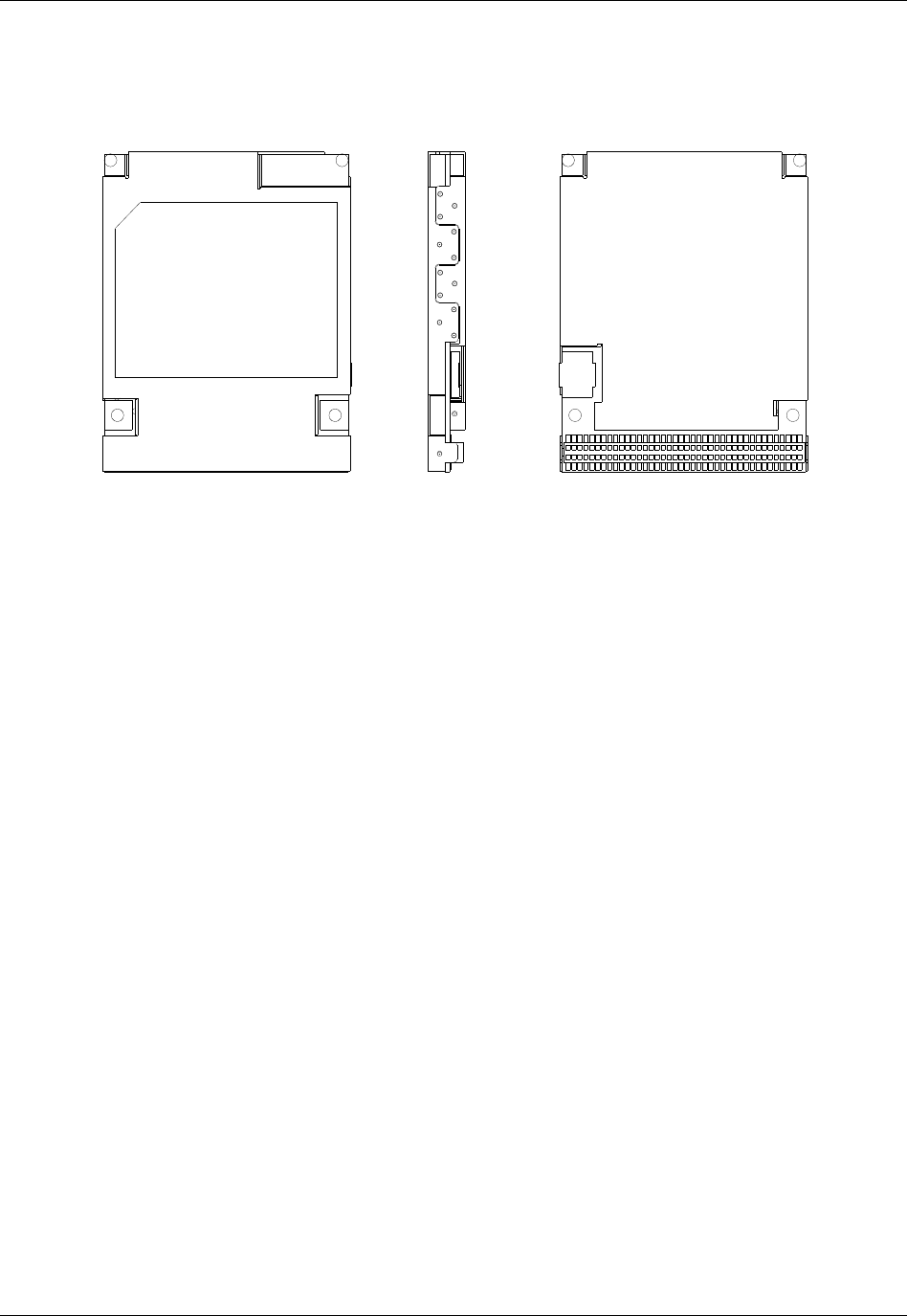
Interface Description EMIII-DUAL Servce Manual Application Information
EMIII-DUAL V1.0 AnyDATA.NET Proprietary – Use Subject to Restrictions
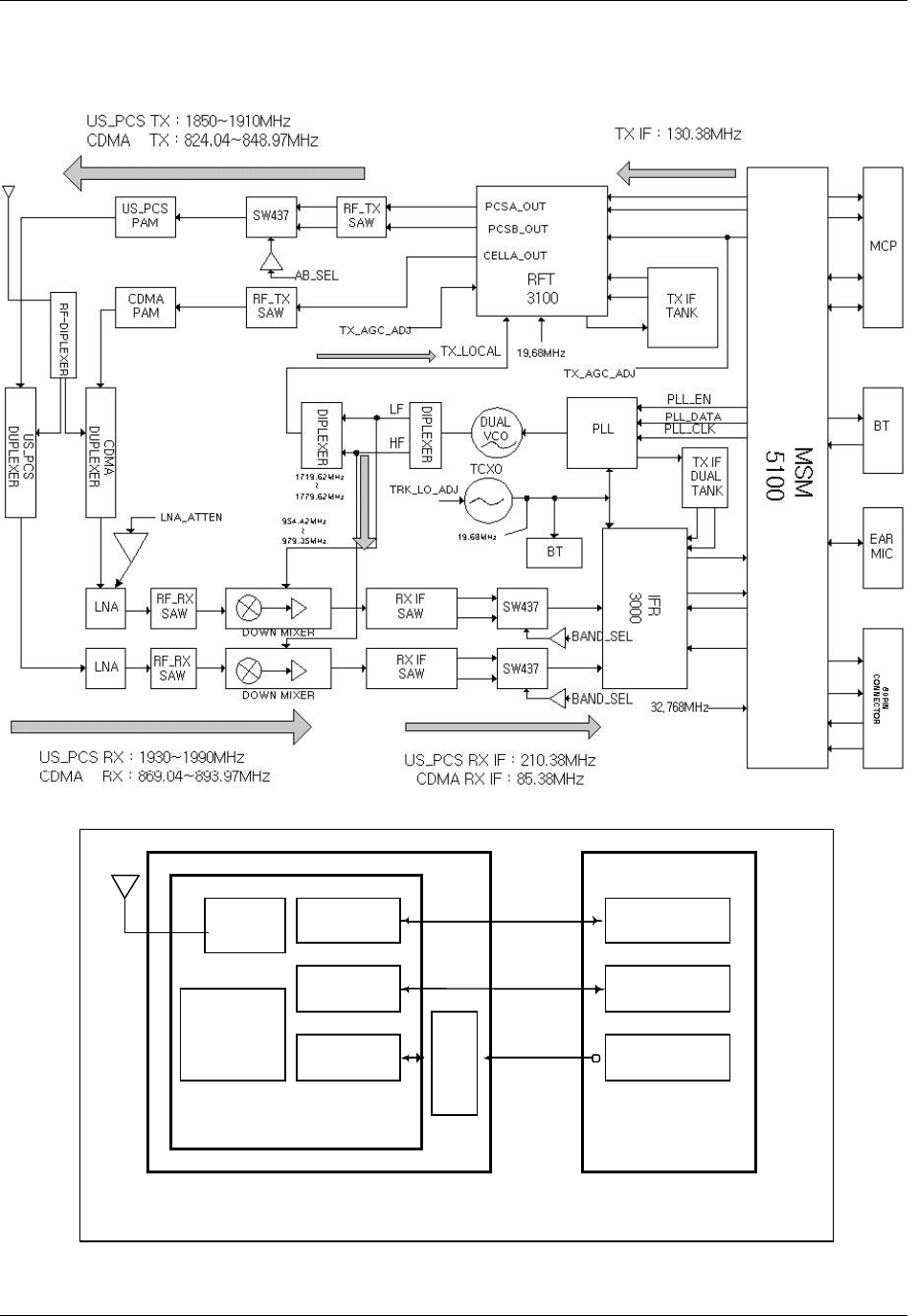
Interface Description EMIII-DUAL Servce Manual Application Information
EMIII-DUAL V1.0 AnyDATA.NET Proprietary – Use Subject to Restrictions
2. Block & Circuit Diagram
2.1. MODEM Block Diagram
2.2. EMIII-DUAL Block Diagram
RF Unit
MSM5100
UART1
MSM Inter.
CODEC
LDO(12V)
RS-232
EARJACK
ANT
DT2000-DUAL
Application Device
EMIII-DUAL
LDO(4V)
External PWR
(6~14V)
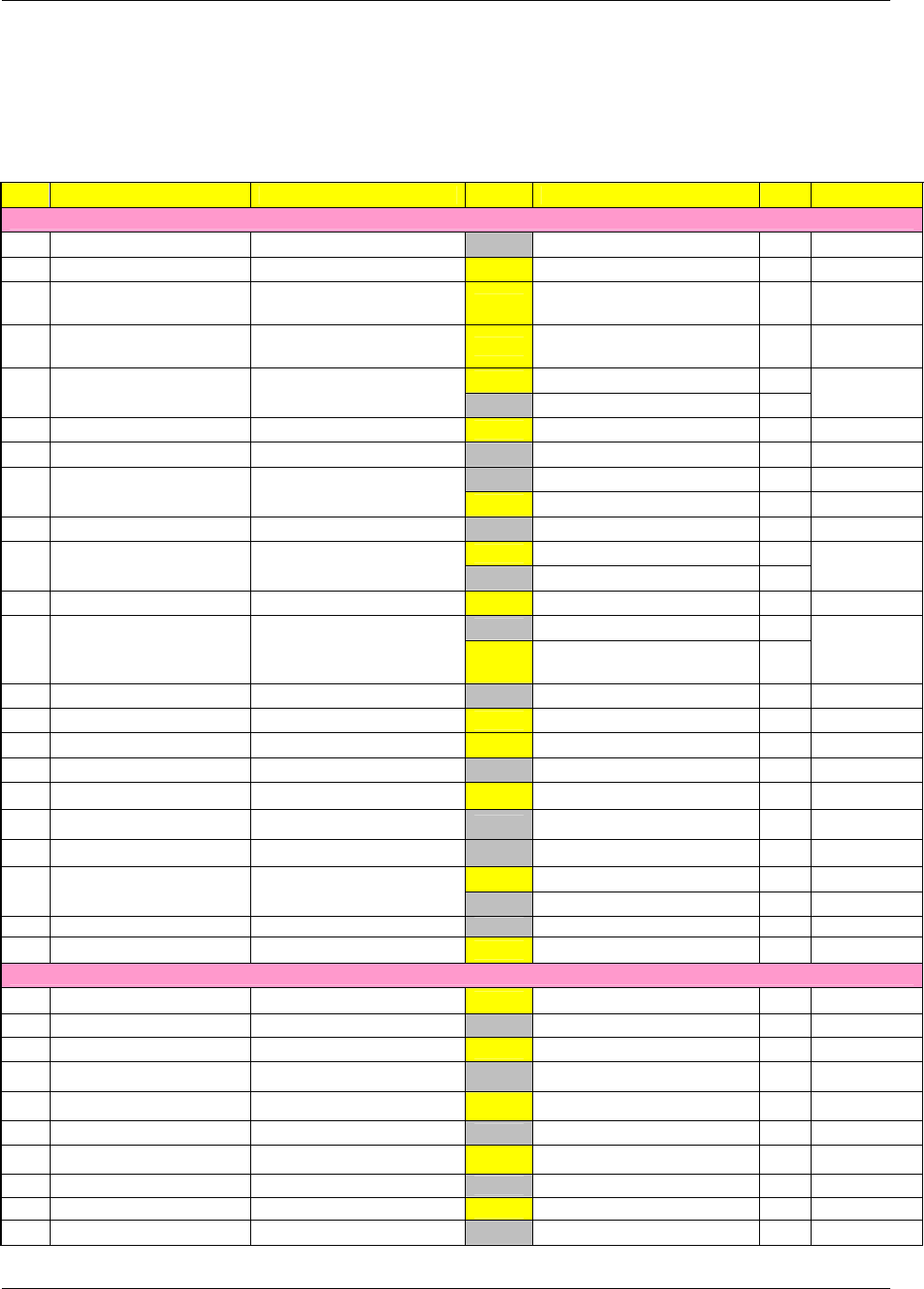
Interface Description EMIII-DUAL Servce Manual Application Information
EMIII-DUAL V1.0 AnyDATA.NET Proprietary – Use Subject to Restrictions
3. Part List
3-1. MODEM Part List
V0.2
19, dec ,2001
NO
COMPONENT NAME DESCRIPTION Lay. DESIGN NUMBER Q'ty
MAKER
LOGIC
1 MSM5100-A208FBGA-TR MSM5100 (208P) BOT U301 1 QUALCOMM
2 IFR3000-48BCCF-TR IFR3000 (48P) TOP U102 1 QUALCOMM
3 RFT3100-32BCCP-TR RFT3100 (32P) TOP U203 1 QUALCOMM
4 MB84VD21182A-85-PBS MCP(16M+4M) TOP U302 1 FUJITSU
TOP U404, U409 2
5 MIC5245-3.0VBM5 LDO (3.0V) BOT U402, U406, U407 3 MICREL
6 MIC5245-2.7VBM5 LDO (2.7V) TOP U408 1 MICREL
7 MIC5245-2.9VBM5 LDO (2.9V) BOT U411 1 MICREL
BOT U303, U304 2 TOSHIBA
8 TC7SU04FU INVERTER TOP U208, U209 2
9 FDC634P P CH-MOSFET(SSOT-6) BOT U202 1 FAIRCHILD
TOP U405 1
10 TP0205AD DUAL FET BOT U403 1 VISHAY
11 S-80827ALNP-EDT-T2 RESET IC TOP U410, U412 2 SEIKO
BOT Q201, Q202 2
12 DTC124EE-TL DIGITAL TR TOP Q401, Q402, Q403, Q404, Q405
Q407 6 ROHM
13 2SC4617 DIGITAL TR BOT Q102 1 ROHM
14 UMC4N-TR DIGITAL TR TOP Q406 1 ROHM
15 UMH2N-TN DIGITAL TR TOP U401 1 ROHM
16 HSMP-389F PIN DIODE BOT VD103, VD104 2 AGILENT
17 UPS5819 SCHOTTKY DIODE TOP ZD401 1 MICRO SEMI
18 CON16-AXK6F24345J BT CONNECTOR BOT CON402 1
19 B06B-4101-606 60PIN CONNECTOR BOT CON401 1 SKY
TOP VD201, VD202 2 TOSHIBA
20 1SV281 VARACTOR DIODE BOT VD101, VD102 2 TOSHIBA
21 NT732ATD683K THERMISTOR BOT TH201 1 KOA
22 F0805B3R00FW FUSE (1608 Size) TOP FUSE1 1 AVX
RF
1 ACPM7831 PAM(US-PCS) TOP U201 1 AGILENT
2 ACPM7812 PAM(CELLULAR) BOT U204 1 AGILENT
3 HPMD-7903 1900MHz-DUPLEXER TOP DUP101 1 AGILENT
4 FAR-D5CN-881M50-DIN4 800MHz-DUPLEXER BOT DUP102 1 PANASONIC
5 LFDP20N0022A RF - DIPLEXER TOP DIP101 1 MURATA
6 LFDP15N0049A LO - DIPLEXER BOT U205, U206 2 MURATA
7 B4934 RX IF SAW FILTER(5X5) TOP FL102 1 EPCOS
8 B4943 RX IF SAW FILTER(5X5) BOT FL104 1 EPCOS
9 B4135 RX RF SAW FILTER(3X3) TOP FL101 1 EPCOS
10 FS0881B1 RX RF SAW FILTER(3X3) BOT FL103 1 EPCOS
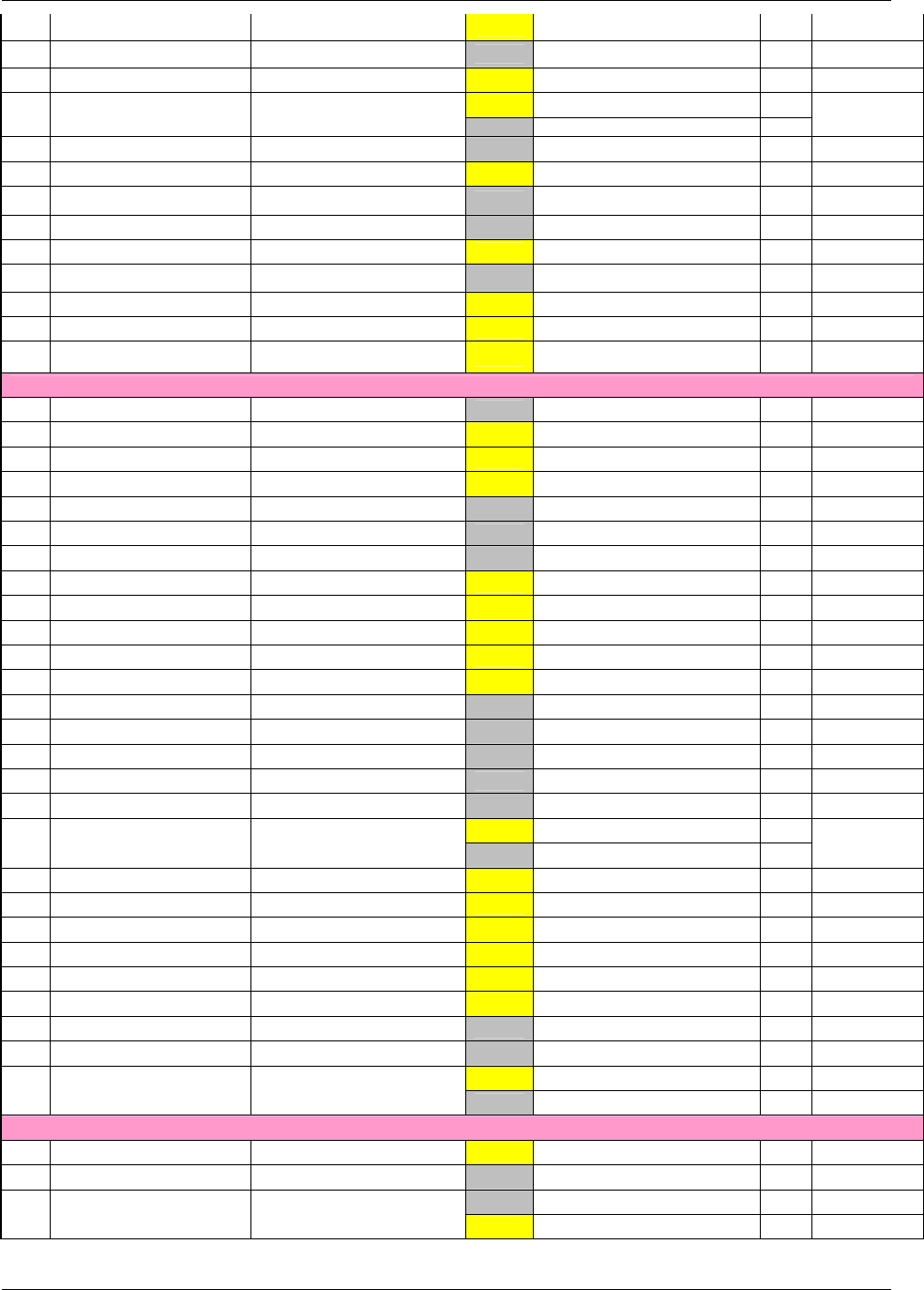
Interface Description EMIII-DUAL Servce Manual Application Information
EMIII-DUAL V1.0 AnyDATA.NET Proprietary – Use Subject to Restrictions
11 LJ49A TX RF SAW FILTER(3X3) TOP FL201 1 EPCOS
12 FS0836B1 TX RF SAW FILTER(3X3) BOT FL202 1 EPCOS
13 VC_3R0A23_09671750A VCO TOP VC201 1 FUJITSU
TOP U101 1
14 CMY212 DOWN MIXER BOT U103 1 INFINEON
15 LMX2354SLBX PLL BOT U207 1 N.S
16 HFX323YM19.68C1 VC-TCXO TOP TCX201 1 MURATA
17 SSP-T6 X-TAL(32.768K-7.0PF) BOT X301 1 SEIKO
18 ATF-38143 RF TR (LNA) BOT Q103 1 AGILENT
19 BFP620 RF TR (LNA) TOP Q101 1 INFINEON
20 BFP420 RF TR (LOCAL BUFFER) BOT Q203, Q204 2 INFINEON
21 SW-437 RF SWITHCH TOP SW103, SW104, SW201 3 M/A COM
22 MM8430-2600TB1 RF SWITHCH TOP SW102 1 MURATA
23 MCA-ST-00T MOBLE SWITHCH TOP SW101 1 SUNRIDGE
INDUCTOR
1 0603CS-15NXG-BC CHIP COIL/15NH(2%) BOT L125, L126 2 COILCRFT
2 0603CS-27NXG-BC CHIP COIL/27NH(2%) TOP L207 1 COILCRFT
3 0603CS-39NXG-BC CHIP COIL/39NH(2%) TOP L110 1 COILCRFT
4 0603CS-56NXG-BC CHIP COIL/56NH(2%) TOP L111 1 COILCRFT
5 0603CS-82NXG-BC CHIP COIL/82NH(2%) BOT L123, L124 2 COILCRFT
6 0603CS-181NXG-BC CHIP COIL/180NH(2%) BOT L121 1 COILCRFT
7 0603CS-221NXG-BC CHIP COIL/220NH(2%) BOT L122 1 COILCRFT
8 CI-B1005-22NSJT IND/2.2N(+-0.3nH) TOP L100 1 CERATECH
9 CI-B1005-27NSJT IND/2.7N(+-0.3nH) TOP L203 1 CERATECH
10 CI-B1005-39NSJT IND/3.9N(+-0.3nH) TOP L107, L202, L209 3 CERATECH
11 CI-B1005-47NSJT IND/4.7N(+-0.3nH) TOP L106, C200 2 CERATECH
12 CI-B1005-56NSJT IND/5.6N (+-5%) TOP L105 1 CERATECH
13 CI-B1005-82NSJT IND/8.2N (+-5%) BOT L204 1 CERATECH
14 CI-B1005-100NSJT IND/10N (+-5%) BOT L208 1 CERATECH
15 CI-B1005-120NSJT IND/12N (+-5%) BOT L114, L115 2 CERATECH
16 CI-B1005-150NSJT IND/15N (+-5%) BOT L112, L117, L118 3 CERATECH
17 CI-B1005-180NSJT IND/18N (+-5%) BOT L116 1 CERATECH
TOP L102 1
18 CI-B1005-101NSJT IND/100N (+-5%) BOT L113 1 CERATECH
19 CI-B1608-150NJJT IND/15N (+-5%) TOP L101 1 CERATECH
20 CI-B1608-47NJJT IND/4.7N (+-5%) TOP L103 1 CERATECH
21 CI-B1608-270NJJT IND/27N (+-5%) TOP L205, L206 2 CERATECH
22 CI-B1608-330NJJT IND/33N (+-5%) TOP L104 1 CERATECH
23 CI-B1608-560NJJT IND/56N (+-5%) TOP L109 1 CERATECH
24 CI-B1608-680NJJT IND/68N (+-5%) TOP L108 1 CERATECH
25 CI-B1608-221NJJT IND/220N (+-5%) BOT L120 1 CERATECH
26 CI-B2012-271NJJT IND/270N (+-5%) BOT L119 1 CERATECH
TOP BL201, BL202 2 MURATA
27 BLM1608A601SPT FERITE BEAD BOT BL401 1 MURATA
CAPACITOR
1 GRM36COG0R5C50PT 0.5pF-1005 Cap TOP C117 1 MURATA
2 GRM36C0G010C50PT 1pF-1005 Cap BOT C152, C159 2 MURATA
BOT C133 1 MURATA
3 GRM36C0G1R5C50PT 1.5pF-1005 Cap TOP C108 1 MURATA
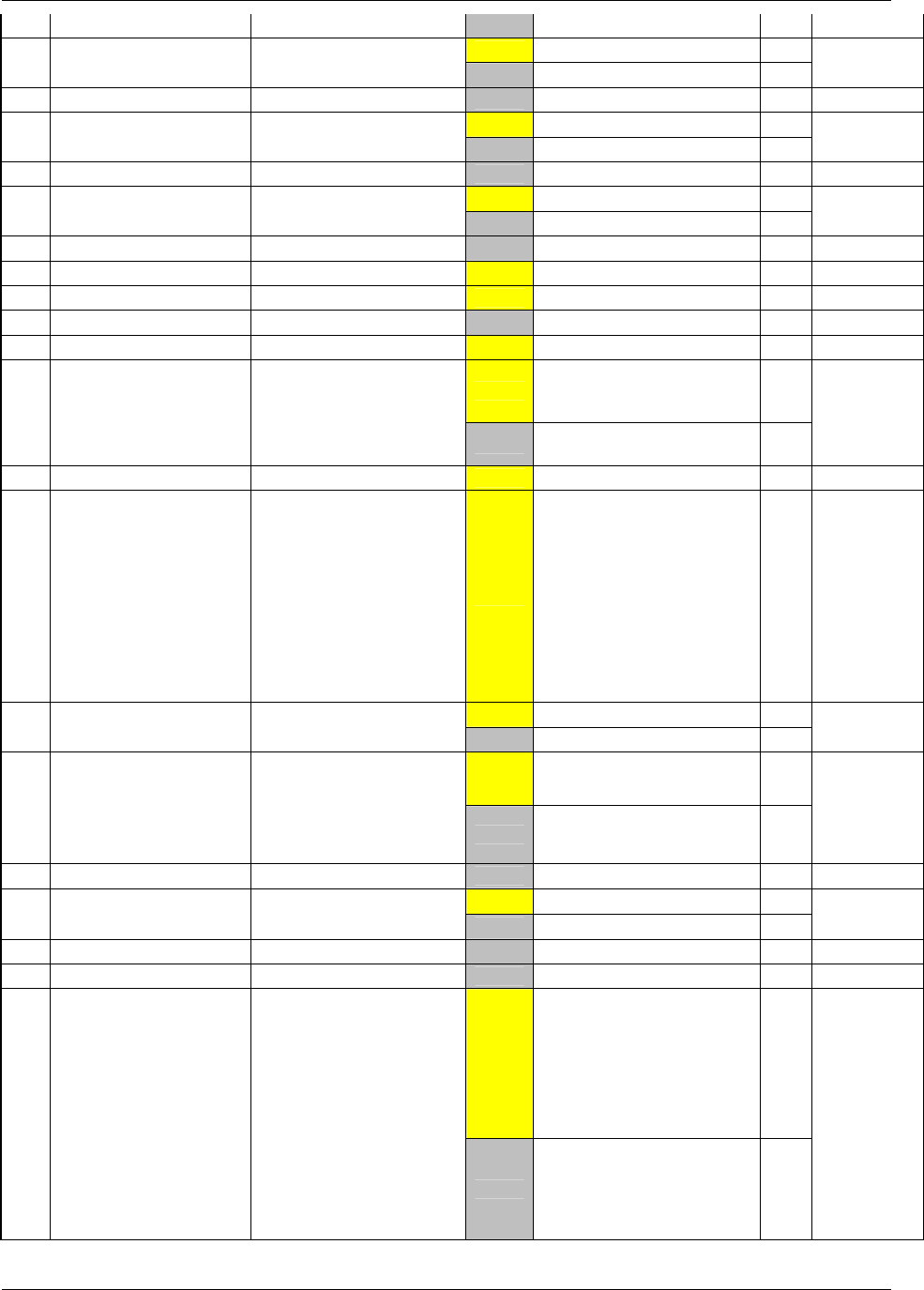
Interface Description EMIII-DUAL Servce Manual Application Information
EMIII-DUAL V1.0 AnyDATA.NET Proprietary – Use Subject to Restrictions
4 GRM36C0G020C50PT 2pF-1005 Cap BOT C142, C253, C258 3 MURATA
TOP C112, C115, C208, C209 4
5 GRM36COG040D50PT 4pF-1005 Cap BOT C241 1 MURATA
6 GRM36COG060D50PT 6pF-1005 Cap BOT C150, C153, C154 3 MURATA
TOP C102, C106, C114, C227, C232
5
7 GRM36COG100D50PT 10pF-1005 Cap BOT C140, C141 2 MURATA
8 GRM36COG120J50PT 12pF-1005 Cap BOT C157, C158 2 MURATA
TOP C219 1
9 GRM36COG150J50PT 15pF-1005 Cap BOT C335, C336 2 MURATA
10 GRM36COG220J50PT 22pF-1005 Cap BOT C111, C135, C149 3 MURATA
11 GRM36COG240J50PT 24pF-1005 Cap TOP C218, C220 2 MURATA
12 GRM36C0G390J50PT 39pF-1005 Cap TOP C206, C207 2 MURATA
13 GRM36C0G470J50PT 47pF-1005 Cap BOT C277, C278, C279 3 MURATA
14 GRM36C0G820J50PT 82pF-1005 Cap TOP C230, C231 2 MURATA
TOP C100, C118, C119, L200, C226,
C254 C260, C264, C267,
C322, C501 11
15 GRM36COG101J50PT 100pF-1005 Cap
BOT C121, C122, C134, C145, C240,
C259 C275, C333 8
MURATA
16 GRM36COG221J50PT 220pF-1005 Cap TOP C175, C176, C224, C225 4 MURATA
17 GRM36COG471J50PT 470pF-1005 Cap TOP
C400, C401, C402, C403, C404
C405, C406, C407, C409, C410
C411, C412, C413, C414, C41
5
C416, C417, C418, C419, C420
C421, C422, C423, C424, C425
C426, C427, C428, C429, C430
C431, C432, C433, C434, C435
C436, C437, C438, C439, C440
C441, C442, C443, C444, C445,
C446
46 MURATA
TOP C109, C166, C177, C178, C228
5
18 GRM36X7R102K50PT 1nF-1005 Cap BOT C144, C269, C303, C334 4 MURATA
TOP
C172, C282, C285, C287, C289
C299, C305, C450, C456, C458
10
19 GRM36COG103J50PT 10nF-1005 Cap
BOT
C223, C268, C300, C301, C304
C307, C447, C448, C452, C454,
C461 11
MURATA
20 GRM36COG123J50PT 12nF-1005 Cap BOT C317, C319 2 MURATA
TOP C310, C311, C313 3
21 GRM36Y5V223Z25PT 22nF-1005 Cap BOT C314 1 MURATA
22 GRM36Y5V333Z25PT 33nF-1005 Cap BOT C179 1 MURATA
23 GRM36Y5V683Z25PT 68nF-1005 Cap BOT C290 1 MURATA
TOP
C110, C113, C116, C160, C162,
C163 C164, C165, C167,
C168, C169, C170 C203, C210,
C211, C212, C214, C215
C216, C217, C221, C222, C229,
C255 C256. C262, C263, C270,
C286, C306 C308, C337
C338, C339
34
24 GRM36Y5V104Z25PT
100nF-1005 Cap
BOT
C138, C139, C143, C147, C148,
C161 C213, C239, C271, C272,
C273, C274 C276, C280, C281,
C288, C315, C316 C318, C320
C340, C341, C342
23
MURATA
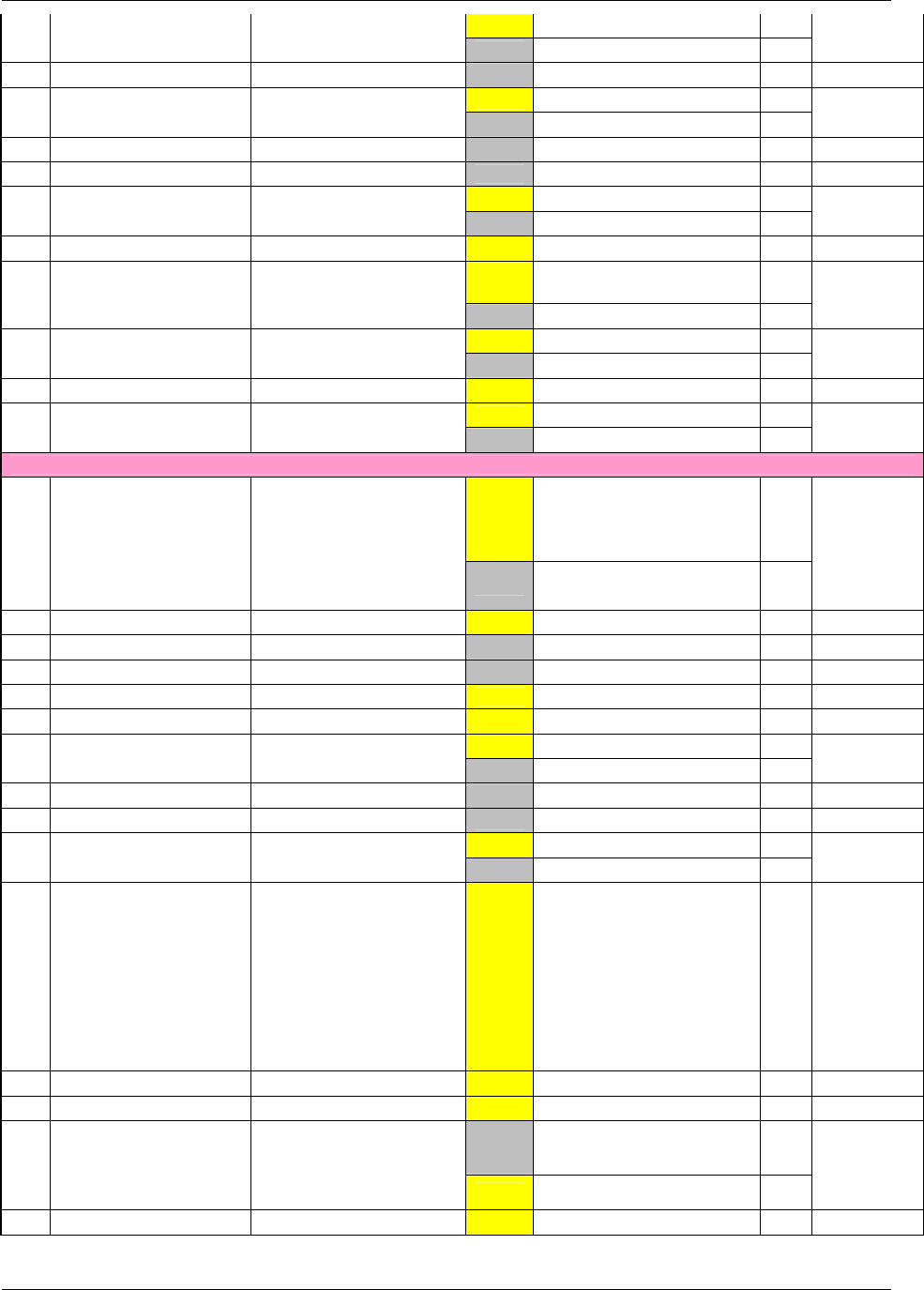
Interface Description EMIII-DUAL Servce Manual Application Information
EMIII-DUAL V1.0 AnyDATA.NET Proprietary – Use Subject to Restrictions
TOP C103, C104, C105, C173 4
25 GRM36COG105J50PT 1uF-1005 Cap BOT C136, C137, C174, C251, C302
5 MURATA
26 GRM39Y5V101Z25PT 100PF-1608 Cap BOT C237 1 MURATA
TOP C235 1
27 GRM39COG102J50PT 1nF-1608 Cap BOT C155 1 MURATA
28 GRM39Y5V103Z25PT 10nF-1608 Cap BOT C266 1 MURATA
29 GRM39Y5V104Z25PT 100nF-1608 Cap BOT C156 1 MURATA
TOP C265 1
30 GRM39Y5V224Z25PT 220nF-1608 Cap BOT C284 1 MURATA
31 GRM39Y5V684Z25PT 680nF-1608 Cap TOP C234 1 MURATA
TOP C261, C309, C312, C451, C459,
C460 C464 7
32 TA-6R3TCMS100M-PR Tan Cap (10uF/6.3V/P)
BOT C283, C453 2
MICREL
TOP C201, C455, C457 3
33 TA-6R3TCMS4R7M-PR Tan Cap (4.7uF/6.3V/P) BOT C449, C462 2 MICREL
34 TA-010TCR330K-A Tan Cap (33uF/6.3V/A) TOP C321 1 MICREL
TOP C202, C463 2
35 595D476X0010U2T Tan Cap(47uF/6.3V/B) BOT C238 1 SPRAGUE
RESISTOR
TOP
R102, R122, R119, R212, R463,
R302 R312, R313, R318, R421,
R458, R464 R467, R466, R468,
R469
16
1 0402 J 0R 0R 5%-1005 Resistor
BOT R109, R204, R263, R320, R321,
R460 R462, R301 8
PHILIPS
2 1608 J 0R 0R 5%-1608 Resistor TOP C198 1 PHILIPS
3 0402 J 18R 18R 5%-1005 Resistor BOT R216 1 PHILIPS
4 0402 J 33R 33R 5%-1005 Resistor BOT R107, R108 2 PHILIPS
5 0402 F 390R 390R 1%-1005 Resistor TOP R201 1 PHILIPS
6 0402 J 10R 10R 5%-1005 Resistor TOP R104, R231 2 PHILIPS
TOP R103, R230, R239 3
7 0402 J 100R 100R 5%-1005 Resistor BOT R234 1 PHILIPS
8 0402 F 220R 220R 1%-1005 Resistor BOT R219 1 PHILIPS
9 0402 J 300R 300R 5%-1005 Resistor BOT R217, R218 2 PHILIPS
TOP R232 1
10 0402 J 330R 330R 5%-1005 Resistor BOT R227, R314 2 PHILIPS
11 0402 J 470R 470R 5%-1005 Resistor TOP
R401, R402, R403, R404, R405,
R406 R407, R422, R423, R424,
R425, R426 R427, R428, R429,
R430, R431, R432 R433, R434,
R435, R436, R437, R438 R439,
R440, R441, R442, R443, R444
R446, R447, R448, R449, R450.
R451 R452, R453, R454, R455,
R456, R457
42 PHILIPS
12 0402 J 510R 510R 5%-1005 Resistor TOP R222 1 PHILIPS
13 0402 J 680R 680R 5%-1005 Resistor TOP R116 1 PHILIPS
BOT R105, R106, R110, R300, R206,
R235 R236, R237, R238 9
14 0402 J 1K 1K 5%-1005 Resistor
TOP R233, R241, R243, R315, R459
5
PHILIPS
15 0402 J 1K5 1.5K 5%-1005 Resistor TOP R305 1 PHILIPS
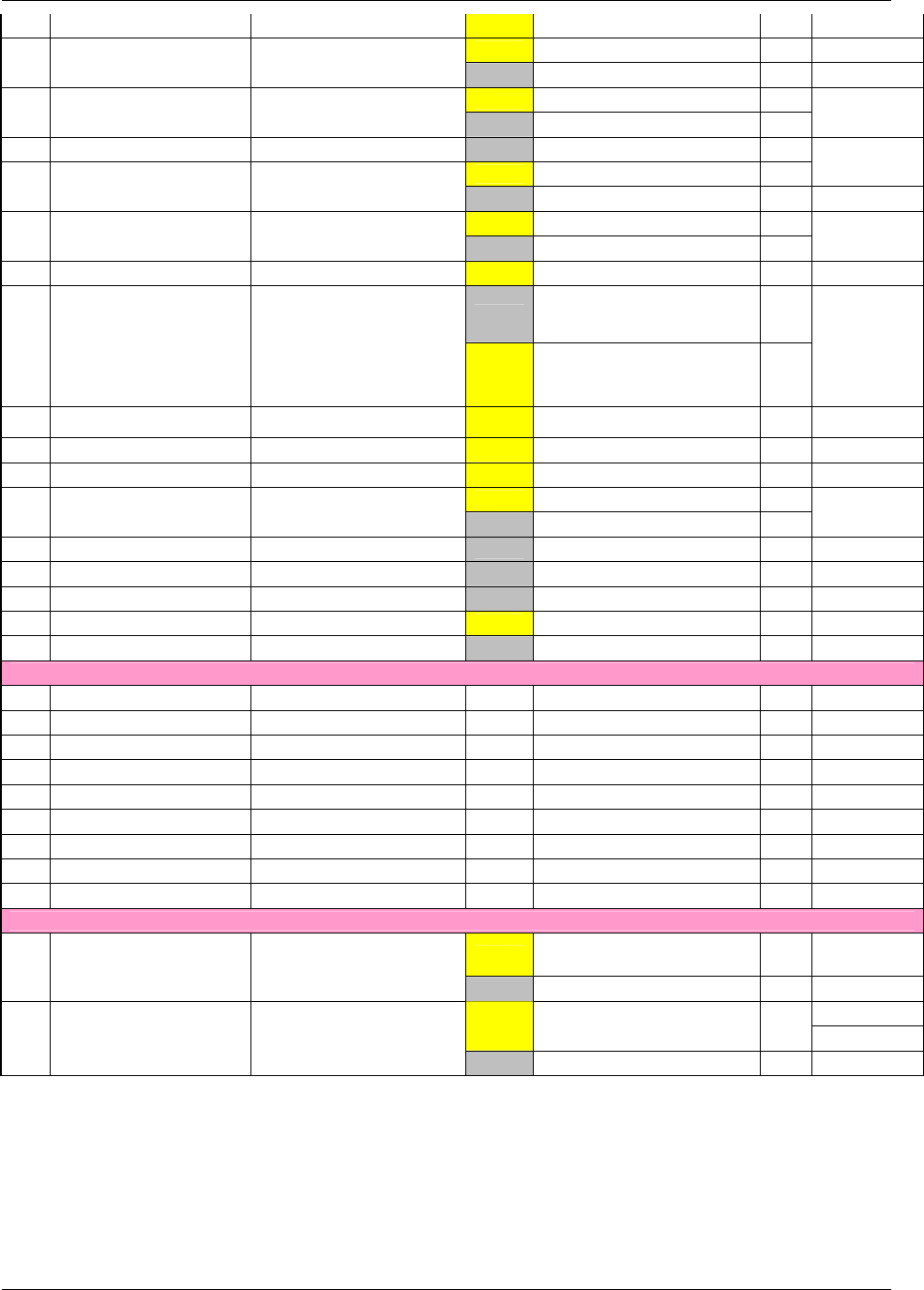
Interface Description EMIII-DUAL Servce Manual Application Information
EMIII-DUAL V1.0 AnyDATA.NET Proprietary – Use Subject to Restrictions
16 0402 J 1K8 1.8K 5%-1005 Resistor TOP R213 1 PHILIPS
TOP R465 1
17 0402 J 2K 2K 5%-1005 Resistor BOT R123 1 PHILIPS
TOP R303, R304, R306 3
18 0402 J 2K2 2.2K 5%-1005 Resistor BOT R226 1 PHILIPS
19 0402 J 3K3 3.3K 5%-1005 Resistor BOT R111 1
TOP C204 1 PHILIPS
20 0404 F 4K7 4.7K 1%-1005 Resistor BOT R317, C239 2 PHILIPS
TOP R225 1
21 0402 J 5K1 5.1K 5%-1005 Resistor BOT R221 1 PHILIPS
22 0402 J 8K2 8.2K 5%-1005 Resistor TOP R120 1 PHILIPS
BOT
R112, R113, R200, R202, R220
R309, R310, R114 R115,
R316 10
23 0402 J 10K 10K 5%-1005 Resistor
TOP R117, R118, R210, R211, R319,
R410 R412, R408, R414, R415,
R416, R418 R419 13
PHILIPS
24 0402 J 22K 22K 5%-1005 Resistor TOP R409, R411, R413, R417 4 PHILIPS
25 0402 J 27K 27K 5%-1005 Resistor TOP R101 1 PHILIPS
26 0402 J 36K 36K 5%-1005 Resistor TOP R121 1 PHILIPS
TOP R209, R242 2
27 0402 J 100K 100K 5%-1005 Resistor BOT R244 1 PHILIPS
28 0402 J 150K 150K 5%-1005 Resistor BOT R245 1 PHILIPS
29 0402 J 180K 180K 5%-1005 Resistor BOT R307, R308 2 PHILIPS
30 0402 J 470K 470K 5%-1005 Resistor BOT R311 1 PHILIPS
30 0402 F 12K1 12.1K 1%-1005 Resistor TOP R207 1 PHILIPS
31 0402 F 1M 1M 1%-1005 Resistor BOT R246, R247 2 PHILIPS
기타
1 DTSS-DUAL PCB Main PCB
2 DTSS-DUAL TOP COVER
기구 TOP COVER
3 DTSS-DUAL TOP FRAME
기구 TOP FRAME
4 DTSS-DUAL BOT COVER
기구 BOT COVER
5 DTSS-DUAL BOT FRAME
기구 BOT FRAME
6 DTSS-DUAL LABEL LABEL
7 정전기 비닐팩
8 포장 BOX
9 생산비용
DNI
TOP R124, R125, R126, R127, R205,
R208 R240, R420, R445 9
1 RESISTOR
BOT R203, R262 2
TOP C101, C107, C120, C171, C233
C257 C352 7
2 CAPACITOR
BOT C146, C151, C250, C252 4
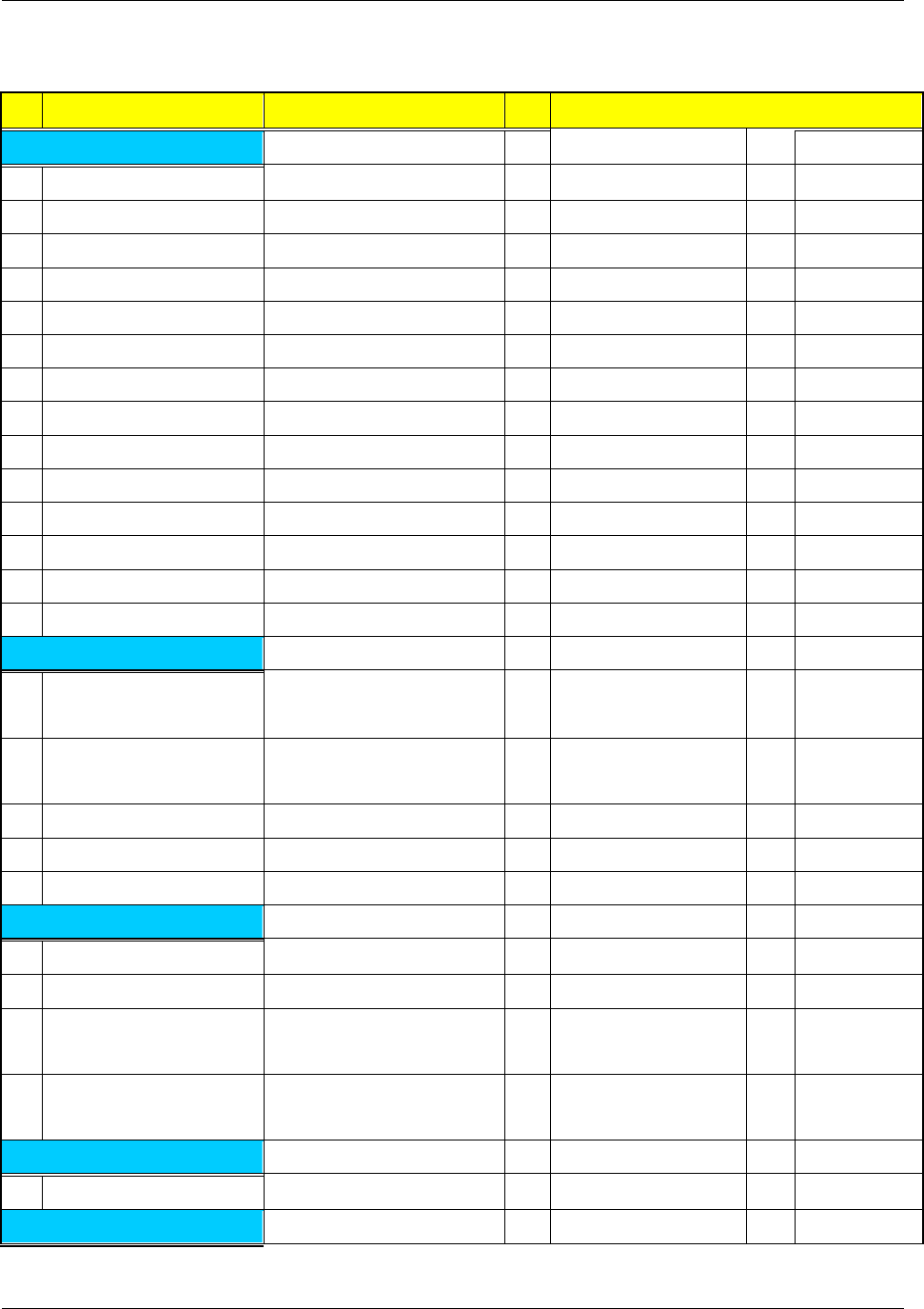
Interface Description EMIII-DUAL Servce Manual Application Information
EMIII-DUAL V1.0 AnyDATA.NET Proprietary – Use Subject to Restrictions
3-2. EM Main Board Partlist
28. Jan. 2002
No
Commponent Name Description Lay
DESIGN NO Vendor
LOGIC
1
1
SMA R/A(F)+ MCA Cable
SMA(F) + MCA TOP
CDMA 1 LINK Tec.
2
PH127-60SMD-16H-2.0 60pin connetor BOT
CN1 1 SKY Elec.
3
TC7SHU04F inverter TOP
U19 3 TOSHIBA
4
UMT2907A PNP TR TOP
U14,16,17 1 ROHM
5
SP207-EA Tranceiver IC TOP
U2 1 SIPEX
6
MIC4576BU LDO (TO-263) TOP
U3 1 MICREL
7
MBRS360T3 Schottky Diode TOP
ZD1 1 MOTOROLA
8
657PL8 8pin Modular Housing TOP
J2 1 ARIN
9
BL-2141N LED(Green) TOP
D4 1 BRT
10
BL-3141N LED(Yellow) TOP
D1,D2,D3 3 BRT
11
HSJ1621-019011 EARJACK TOP
U15 1 HOSIDEN
12
53047-0310 1.25mm male 3pin TOP
CN10 1 MOLEX
13
5268 2.5mm male 3pin® TOP
CN2 1 MOLEX
14
5268 2.5mm male 2pin® TOP
J1 1 MOLEX
RESISTOR
15
MCR03MZSJX000 RESISTOR(1608) 0R TOP
R30,R31,R44,R45,
R46,R47
6 ROHM
16
MCR03MZSJX101 RESISTOR(1608) 100R TOP
R7,R8,R9,R34,R35,
R36,R37
7 ROHM
17
MCR03MZSJX332 RESISTOR(1608) 3.3K TOP
R1,R2,R3 3 ROHM
18
MCR03MZSJX472 RESISTOR(1608) 4.7K TOP
R6 3 ROHM
19
MCR03MZSJX103 RESISTOR(1608) 10K TOP
R5 3 ROHM
CAPACITOR
20
GR39COG471J50PT 470pF -1608 -capacitor TOP
C9 1 MURATA
21
TA-035TCMR10M-AR TANTAL 0.1uF/35V TOP
C5,C6,C7,C8 3 TOWA
22
470uF/16V(10x10.5)
"MVK" 85°C Elec. Cap (chip type) TOP
C1 1 SAMYANG
23
1000uF/6.3V(10x10.5)
"RGV"85°C Elec. Cap (chip type) TOP
C2 1 RUBYCON
INDUCTOR
24
PL52C-33-1000 COIL INDUCTOR (33uH) TOP
L2 1 COOPER
The Others
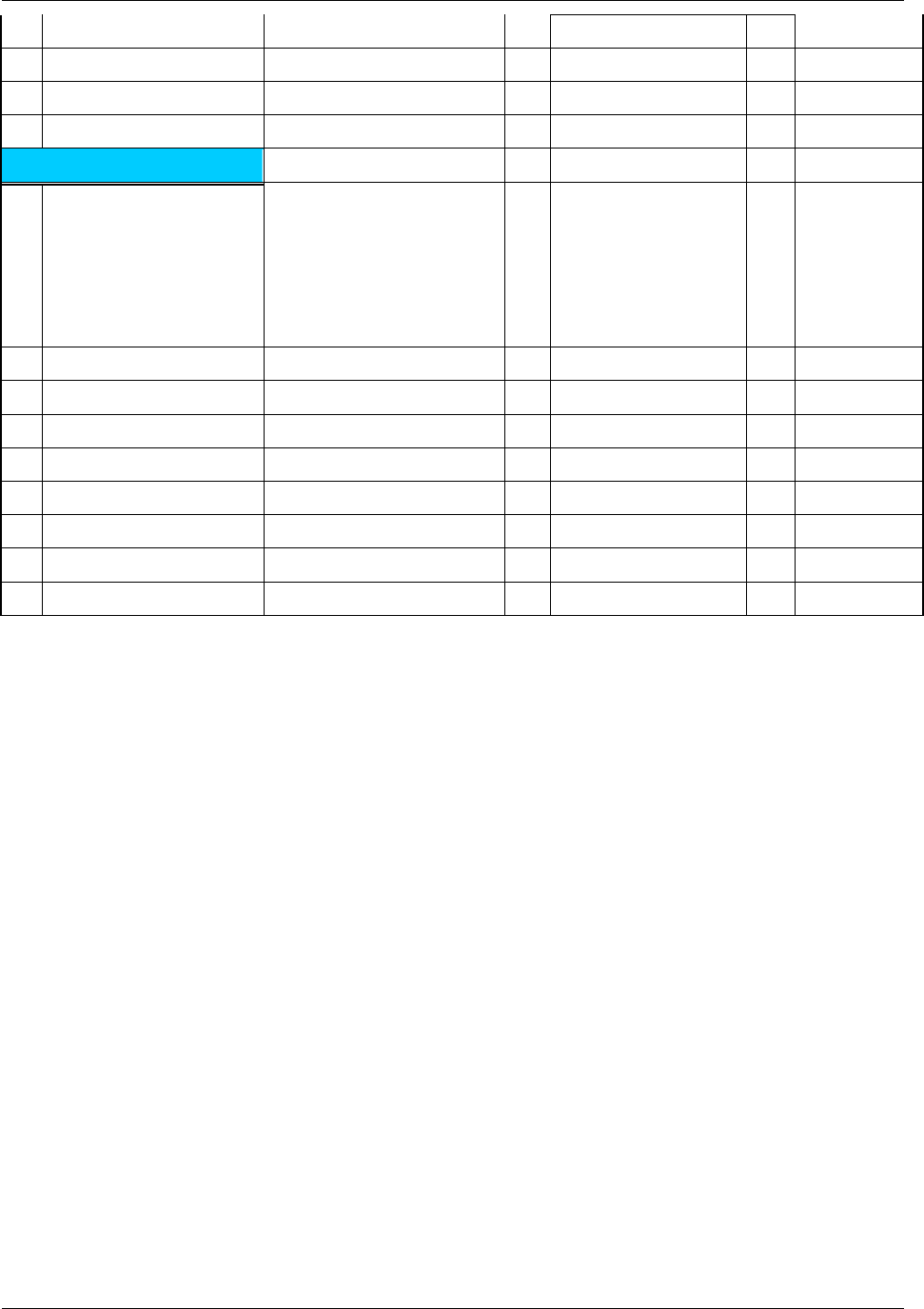
Interface Description EMIII-DUAL Servce Manual Application Information
EMIII-DUAL V1.0 AnyDATA.NET Proprietary – Use Subject to Restrictions
25
EM(II)_PCB _V0.1 EM(II)_PCB_MAIN_ V0.1
UNIC Elec.
26
EM-BODY-00 BODY
TOSUNG
27
EM-FRONT-00 FRONT
TOSUNG
28
EM-REAR-00 REAR
TOSUNG
DNI
29
DNI RESISTOR TOP
R4,R13,R14,R15,
R16, R17,R18,R19,
R20,R21,R22,R23,
R24,R25,R26,R27,
R40,R41,R42,R43
20
30
DNI CAPACITOR TOP
C3,C4 2
31
DNI DA114 TOP
D5 1
32
DNI INDUCTOR TOP
L1 1
33
DNI MIC5205-3.0V TOP
U4 1
34
DNI TC74HC07AF(SOP-14) TOP
U6 1
35
DNI TC74HC4052AFT(SOP-16)
TOP
U5 1
36
DNI 53047-0810(8PIN) TOP
U7 1
37
DNI 5268(3PIN) TOP
CN3, CN4 2

Interface Description EMIII-DUAL Servce Manual Application Information
EMIII-DUAL V1.0 AnyDATA.NET Proprietary – Use Subject to Restrictions
4. Component Layout